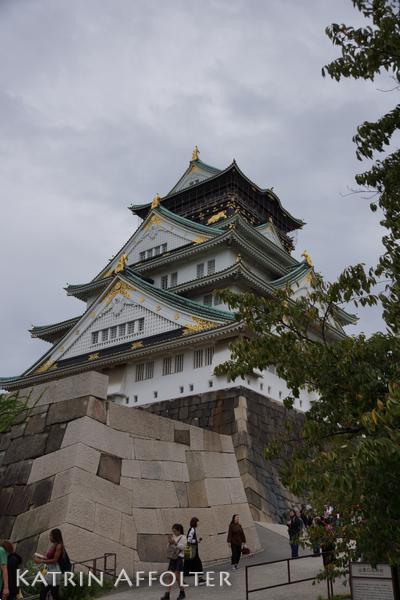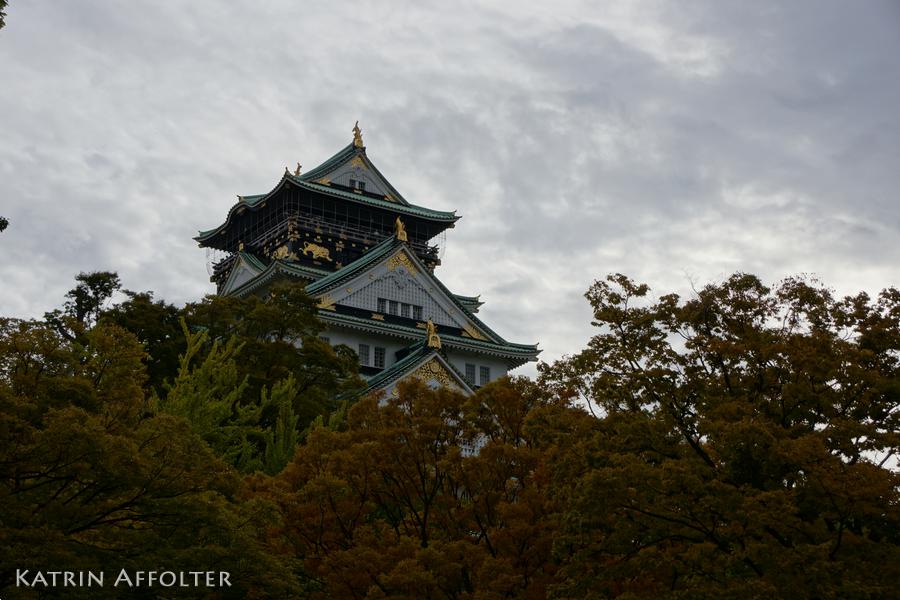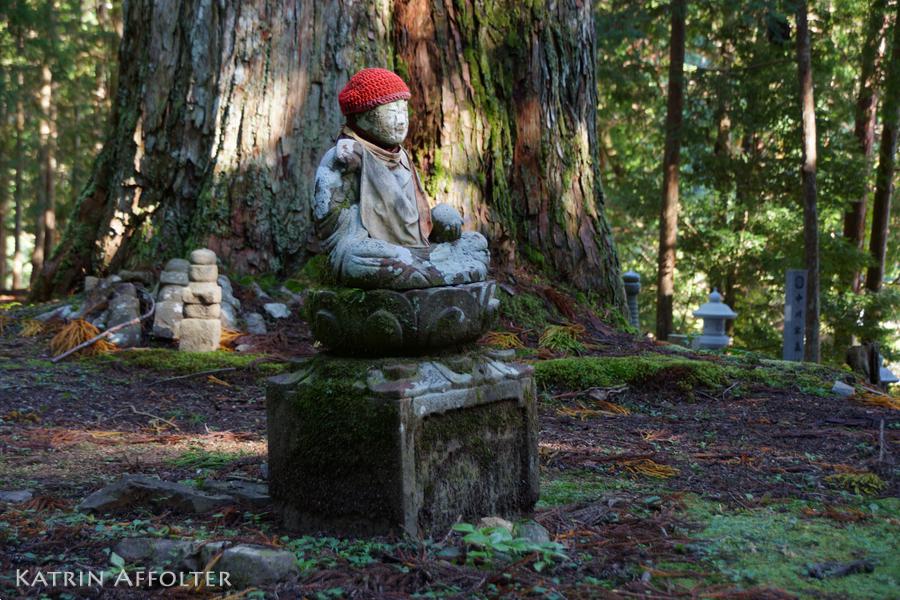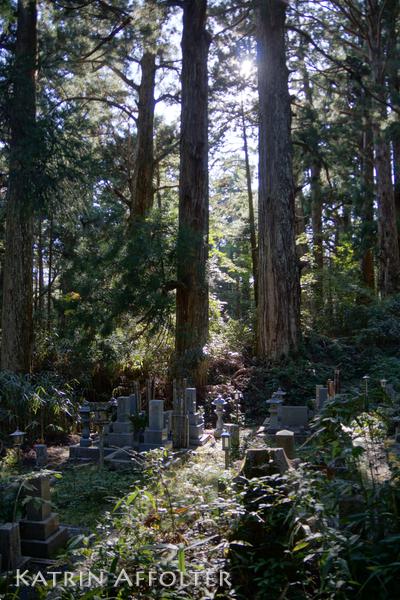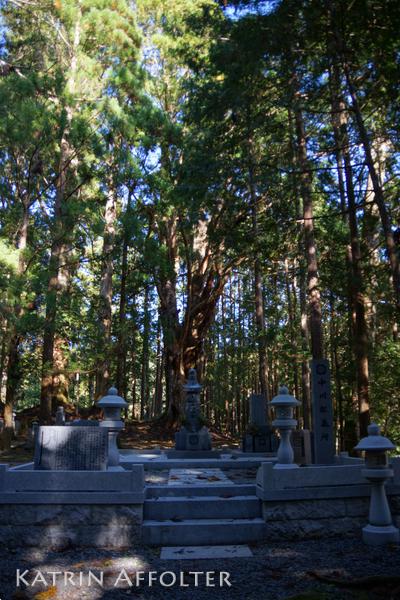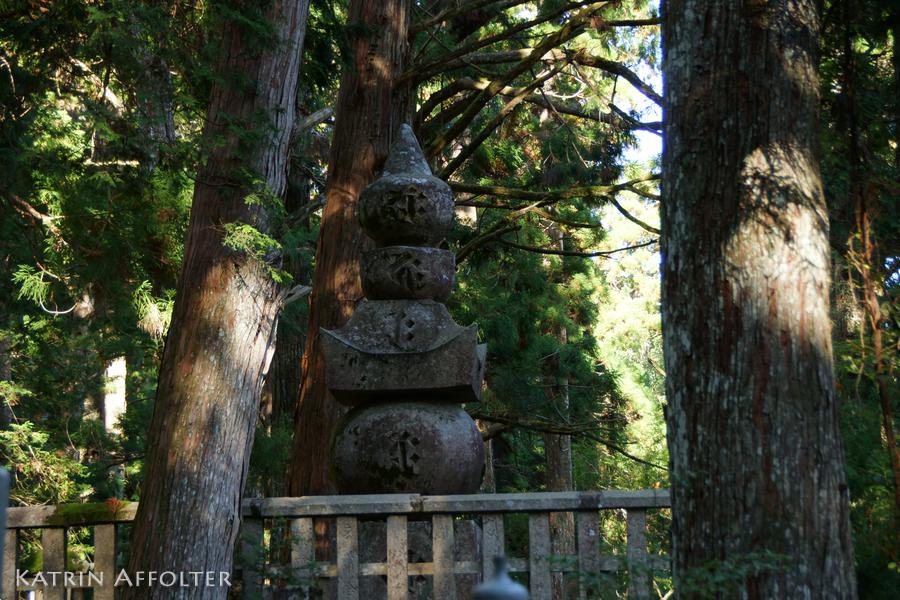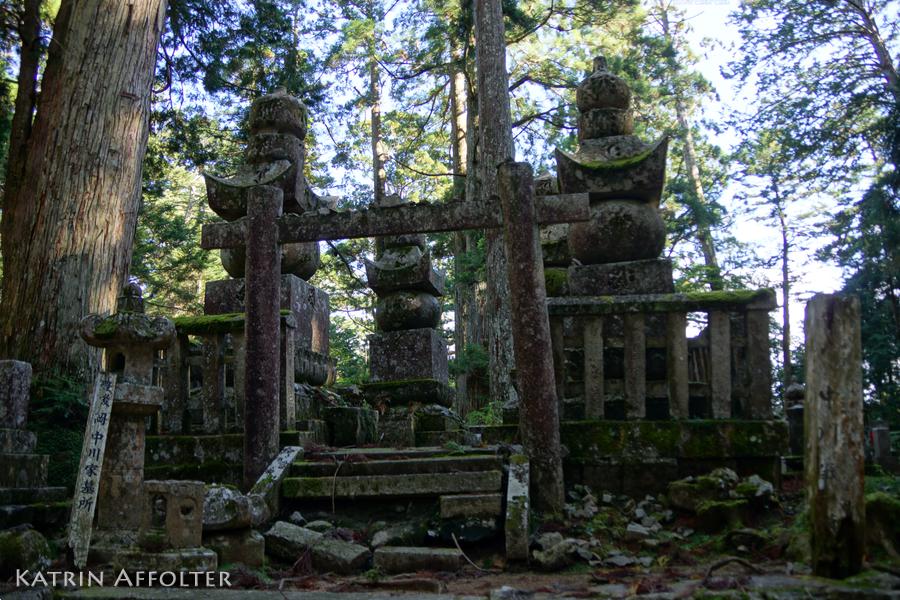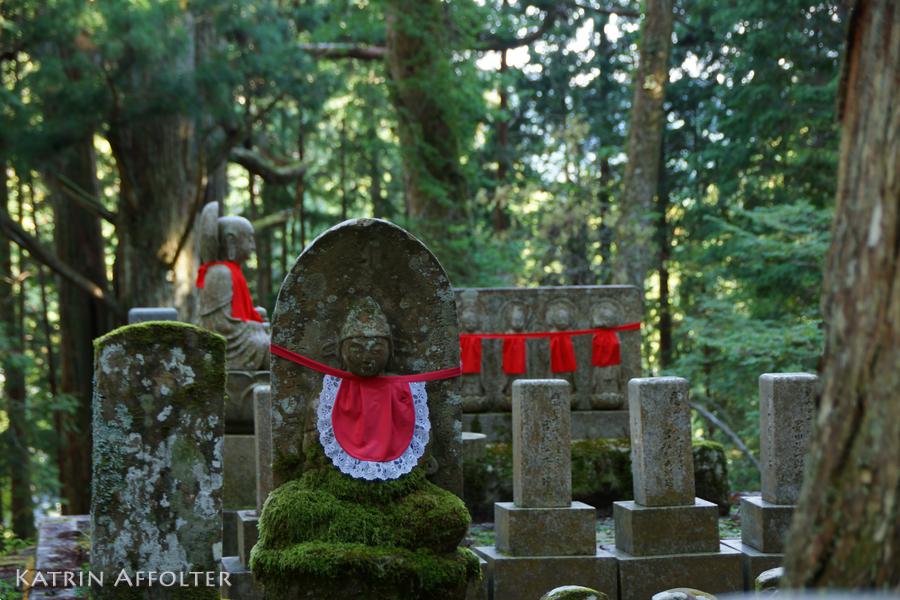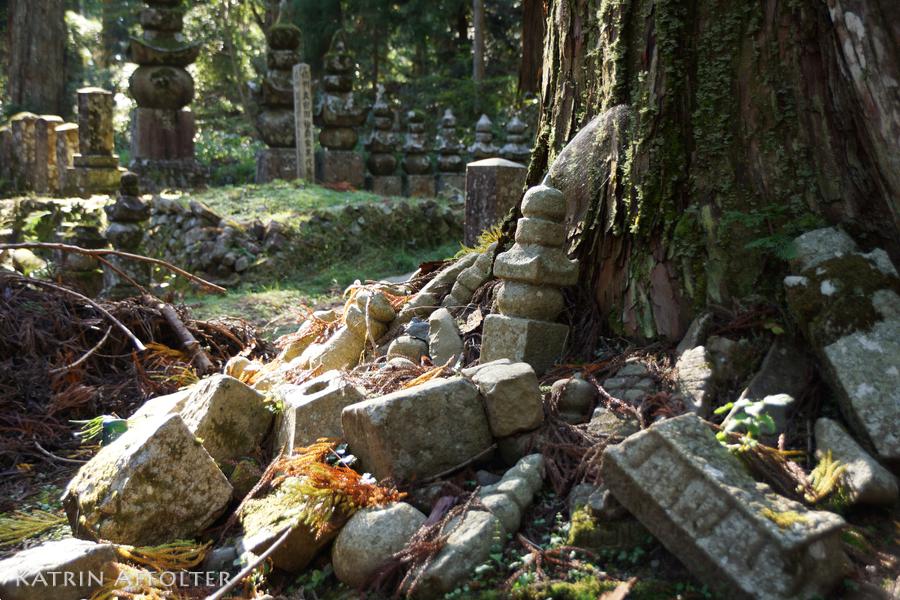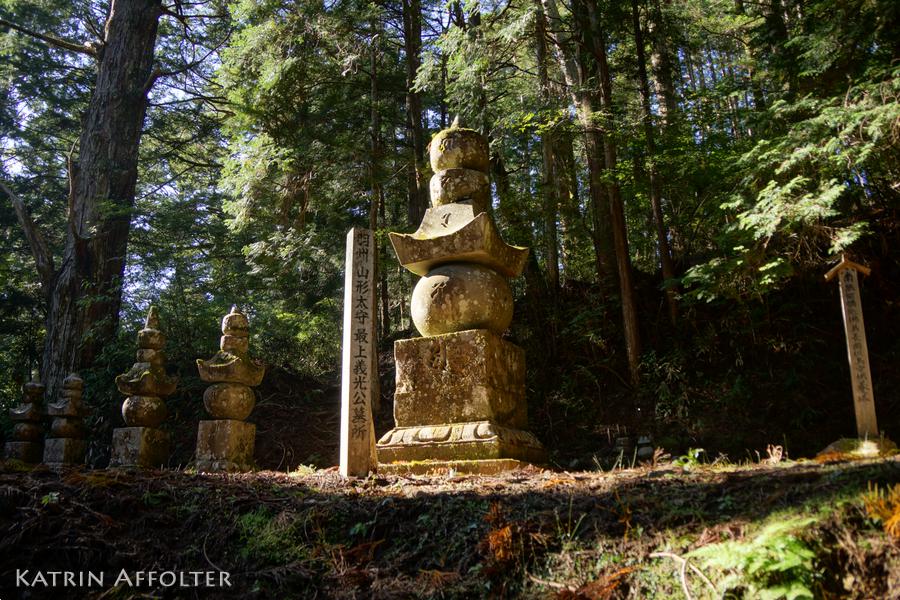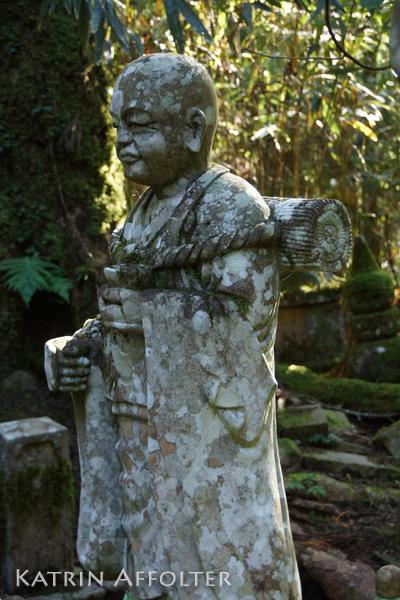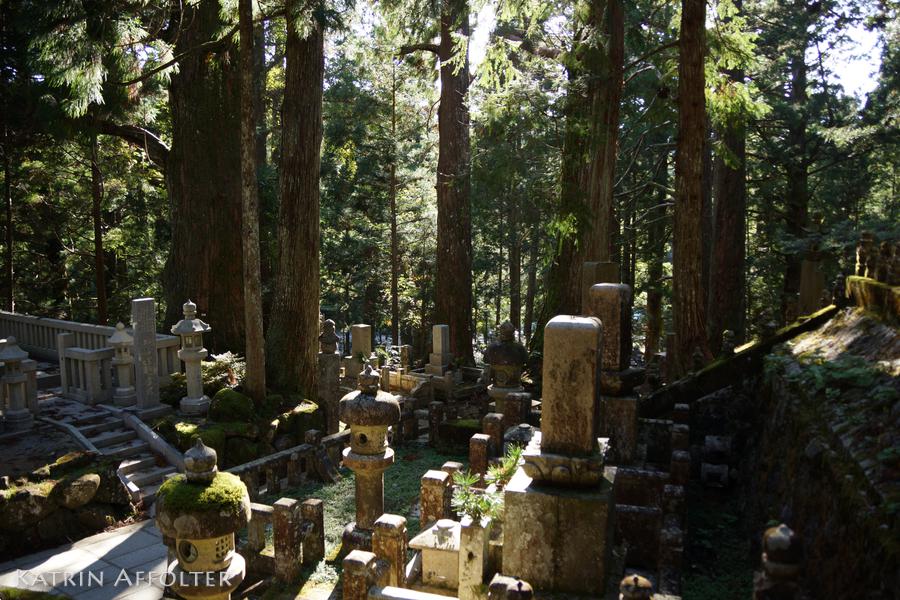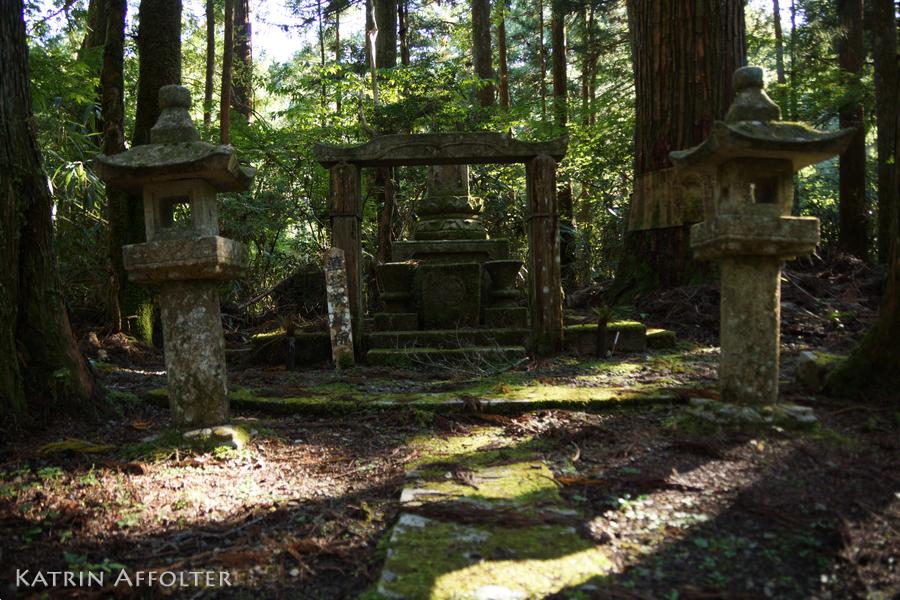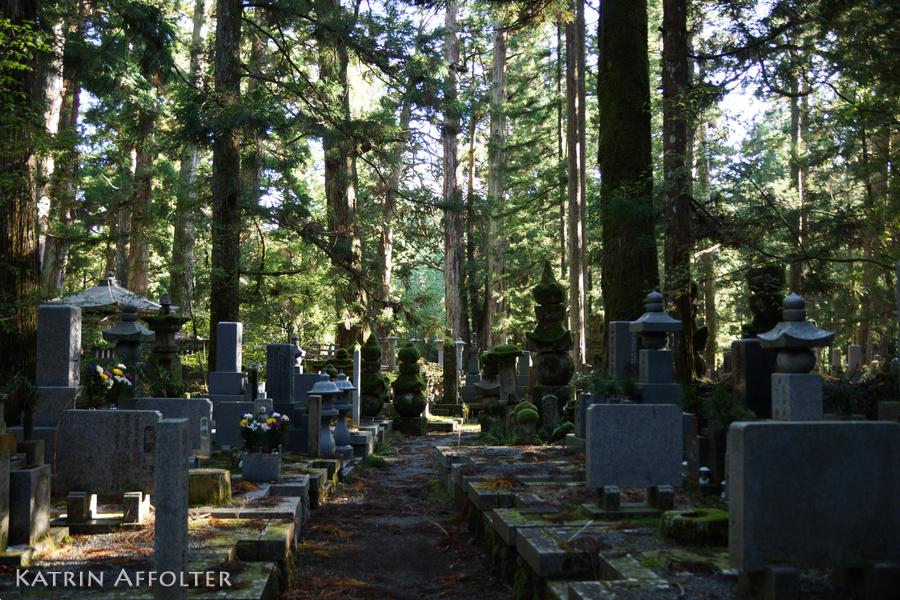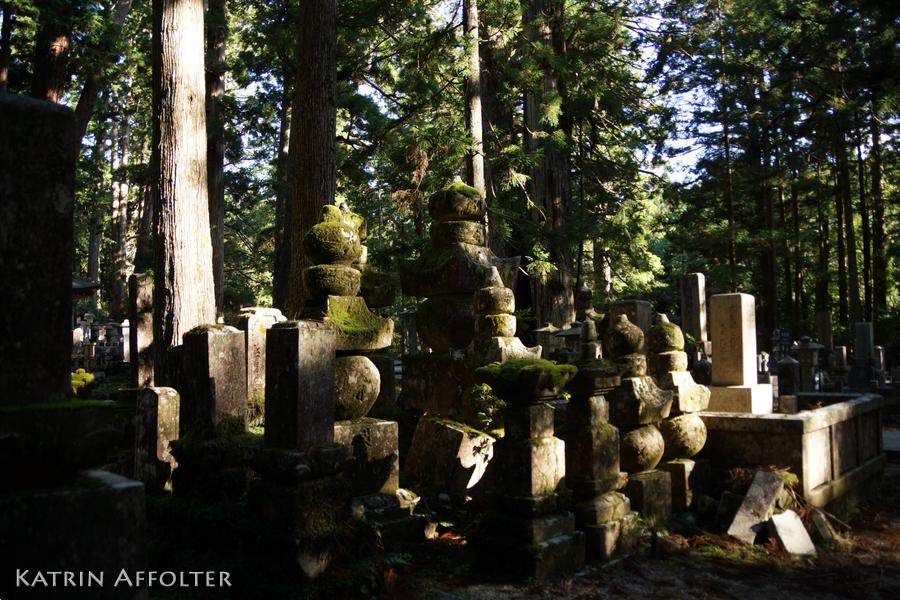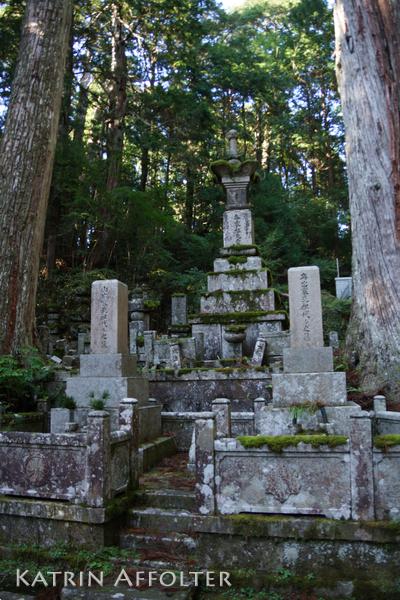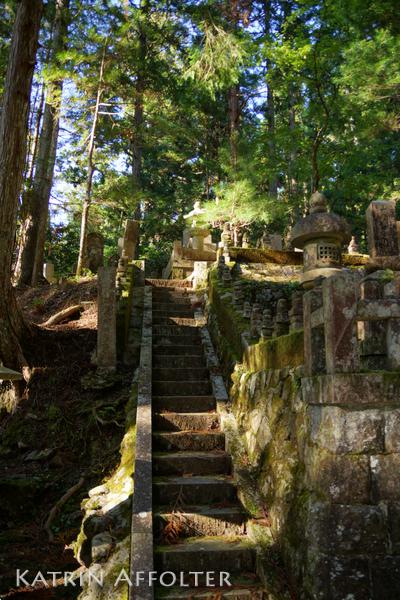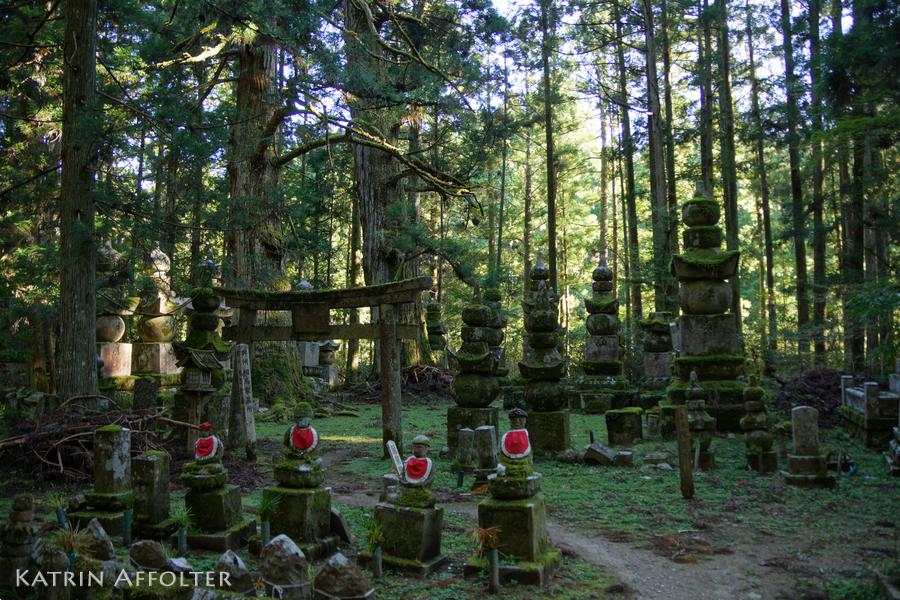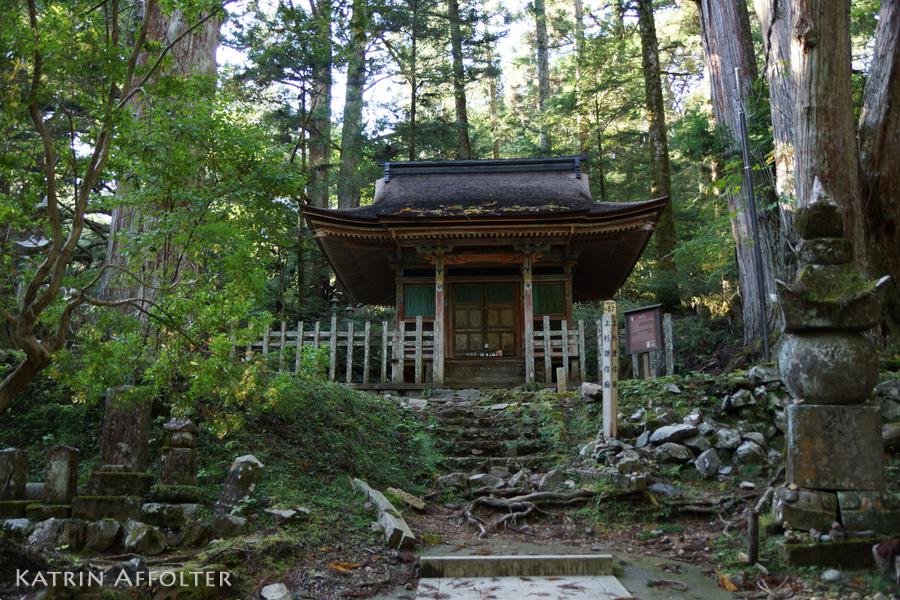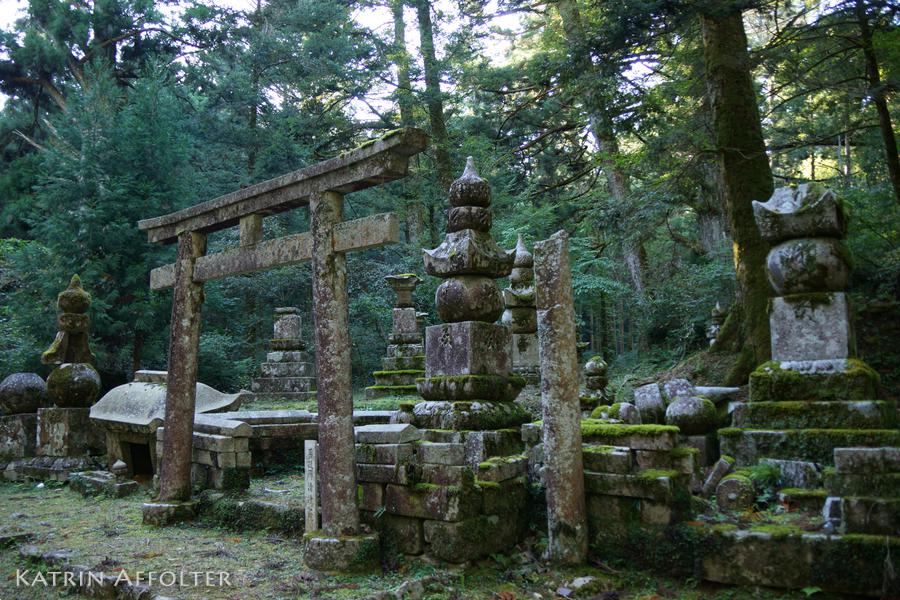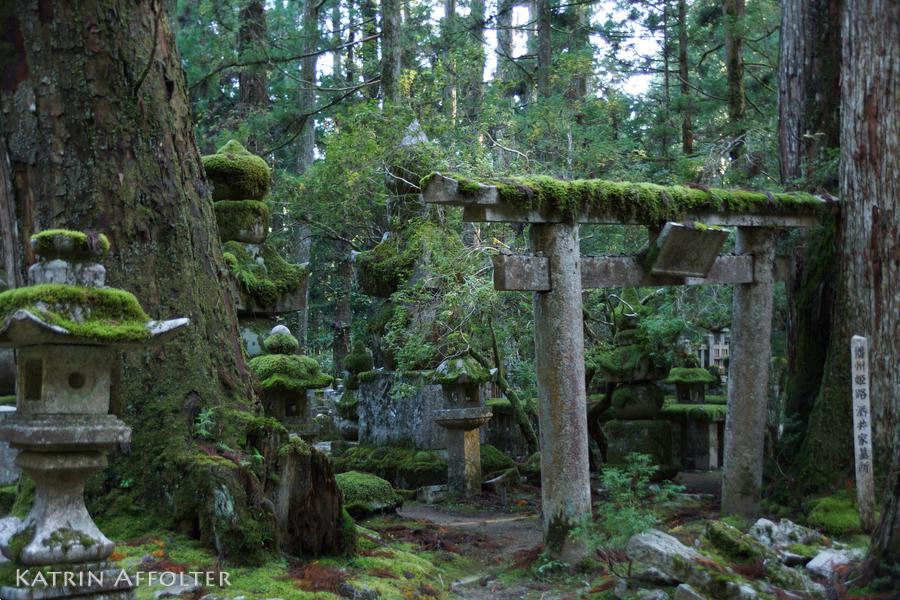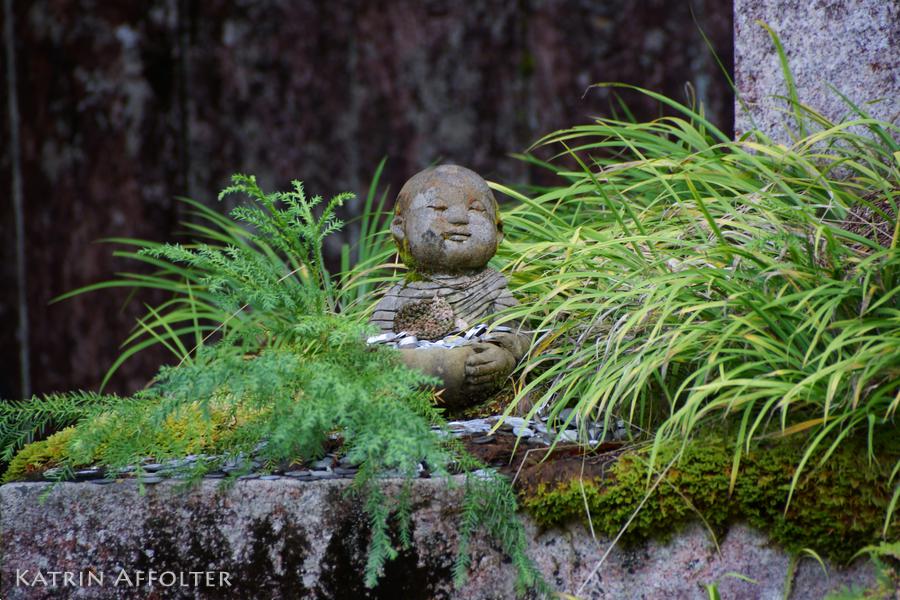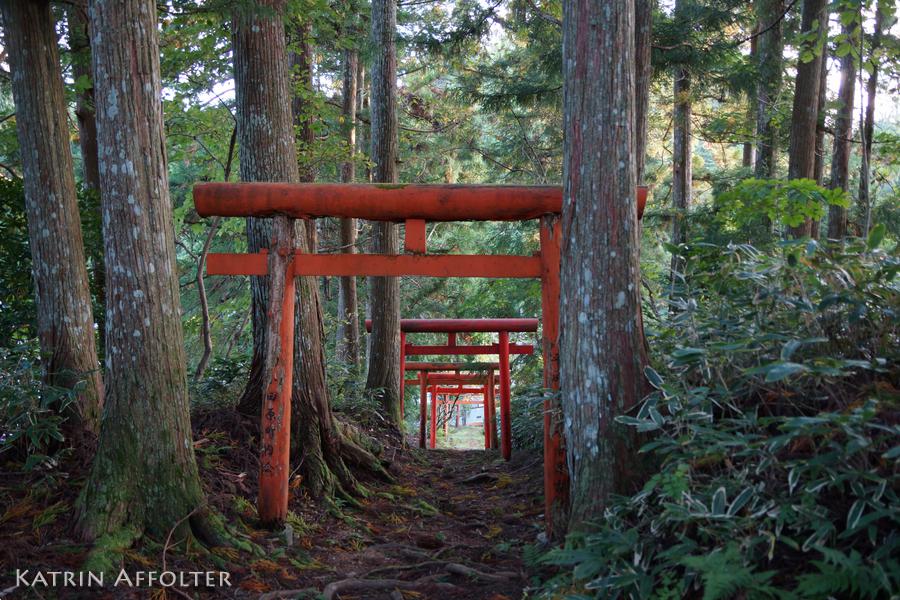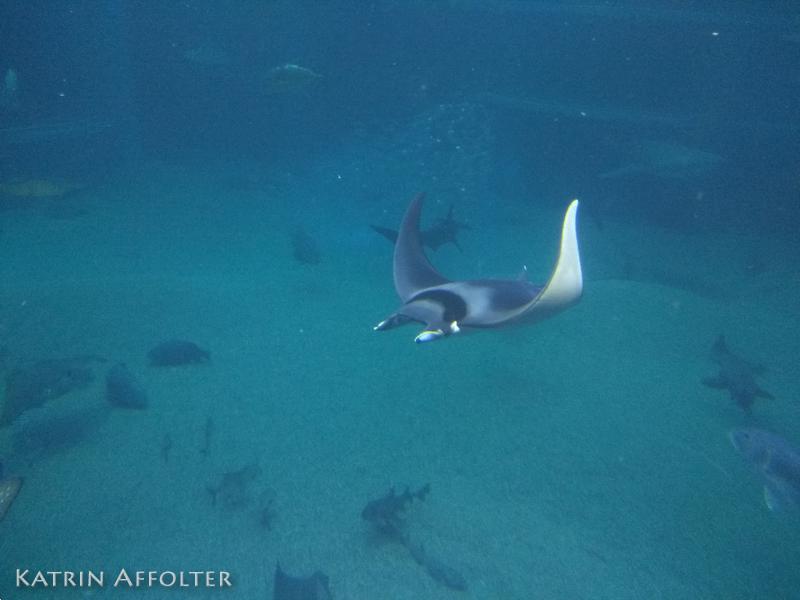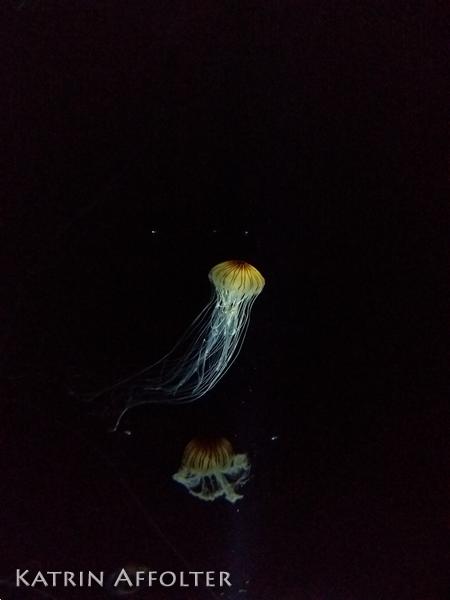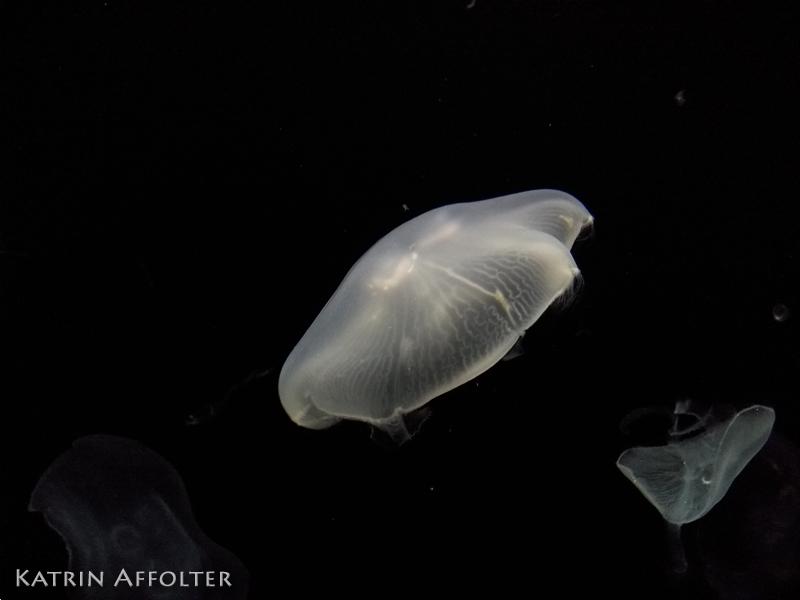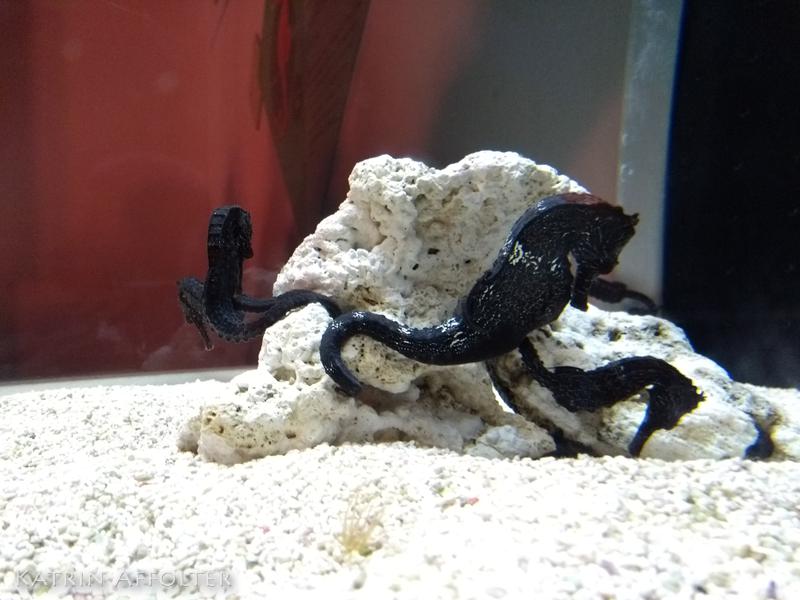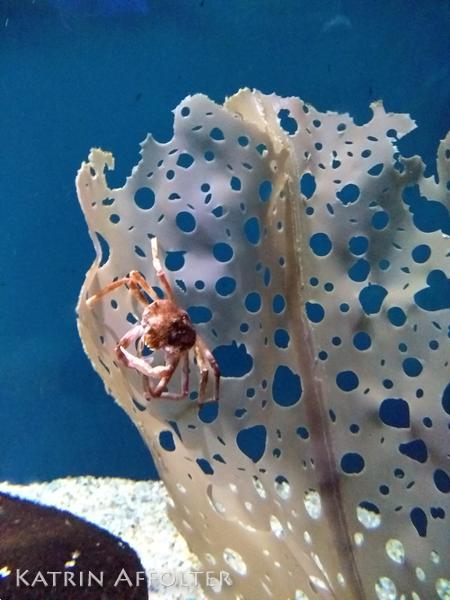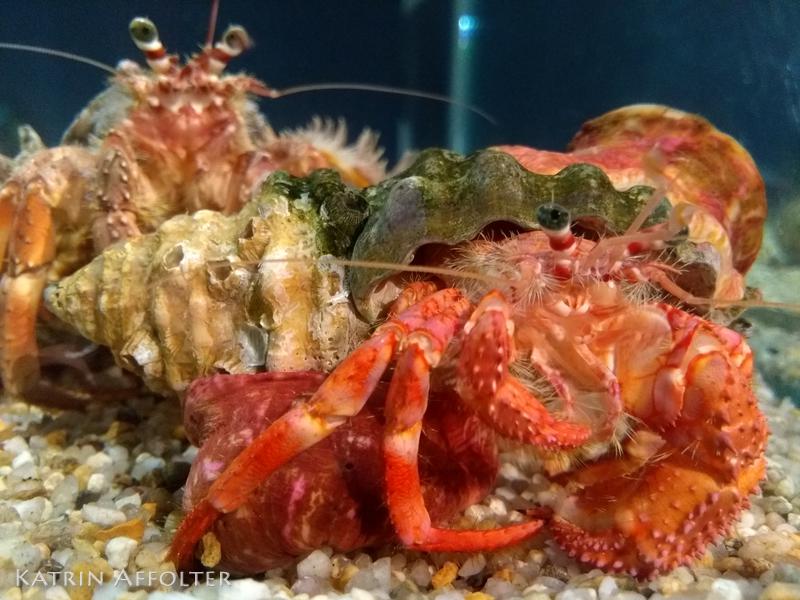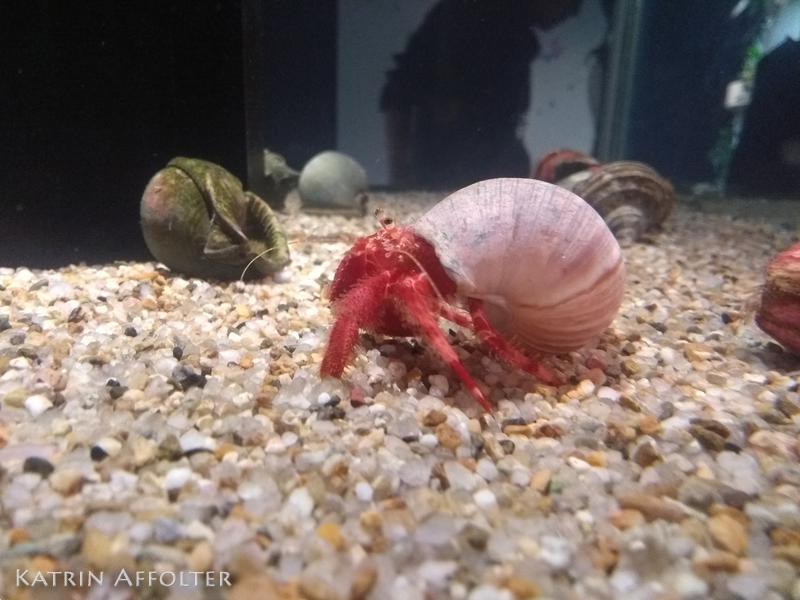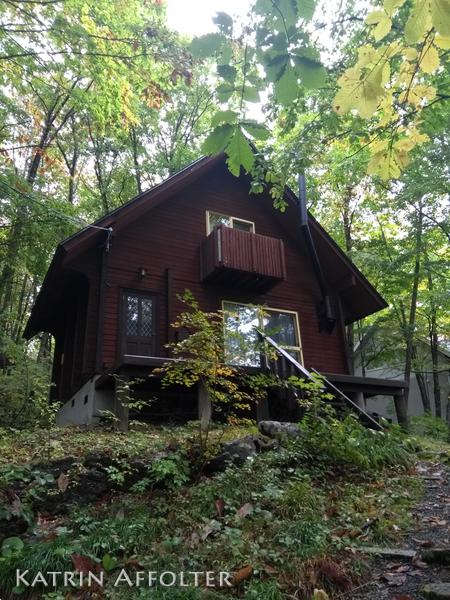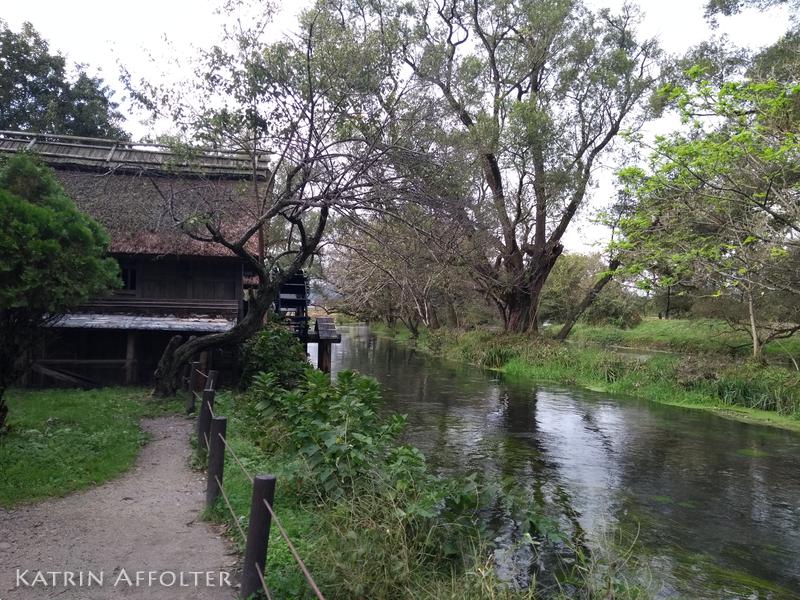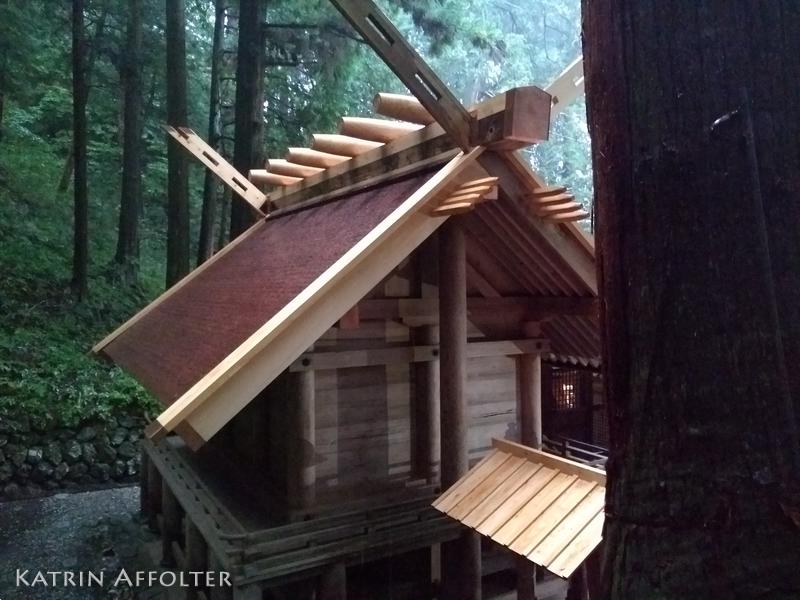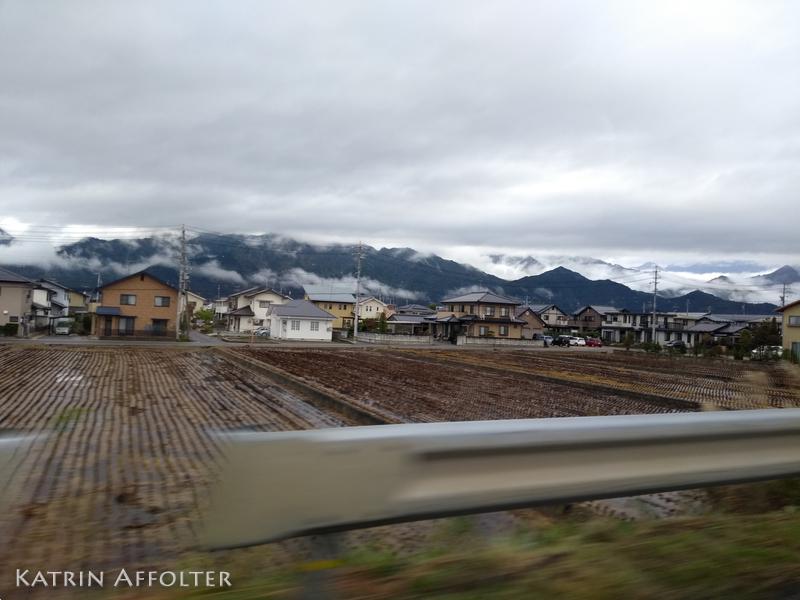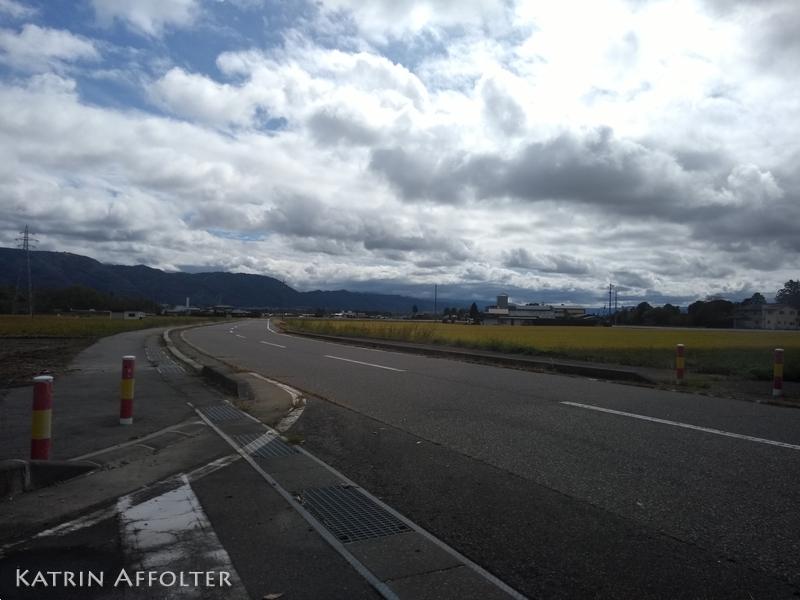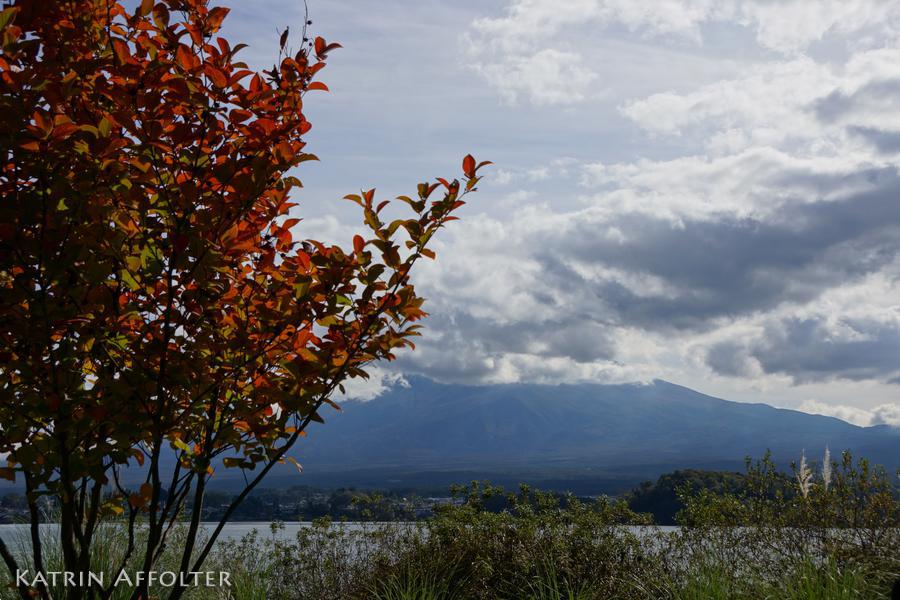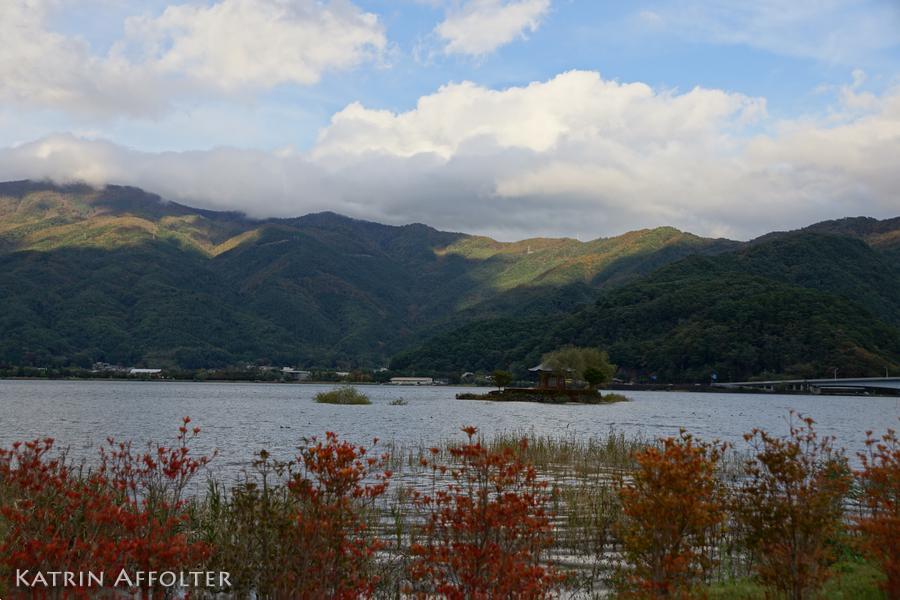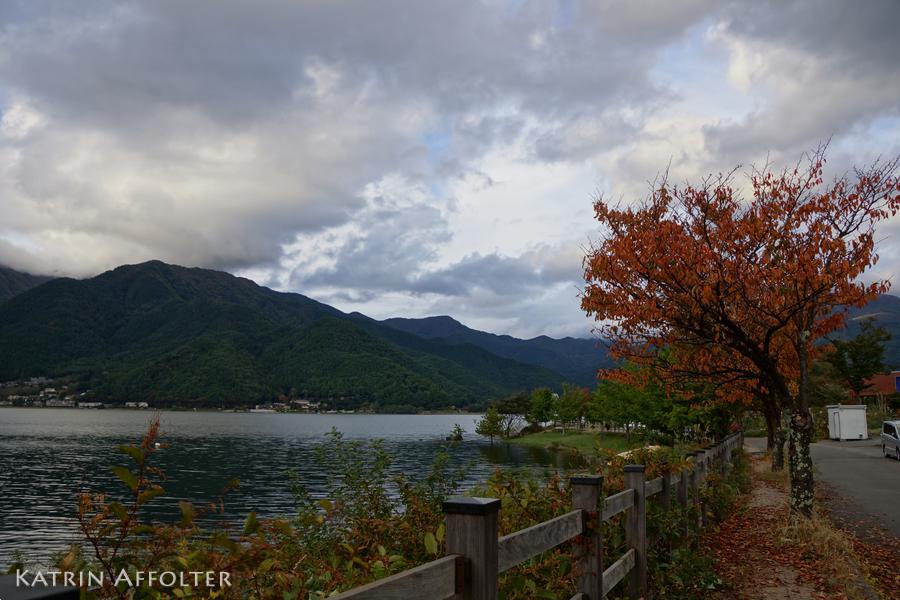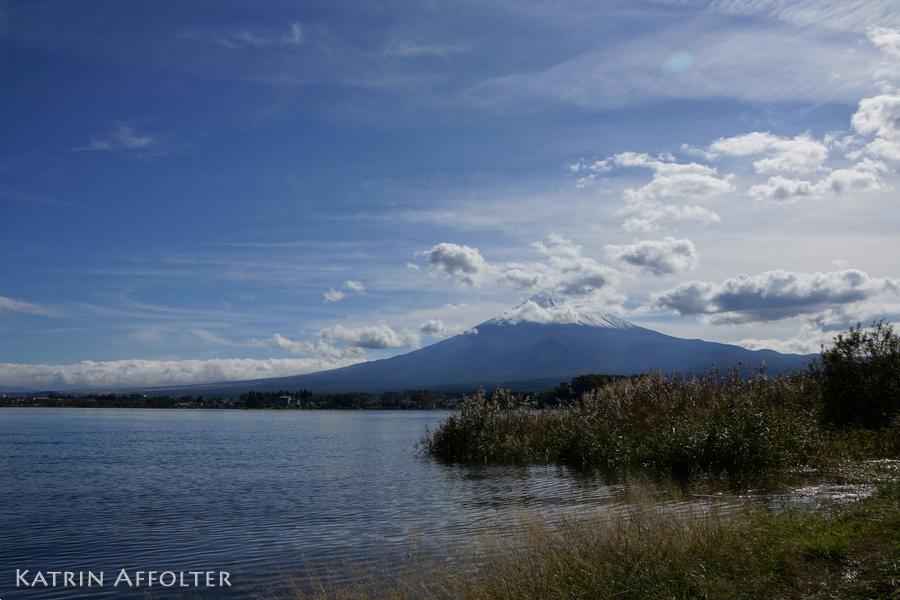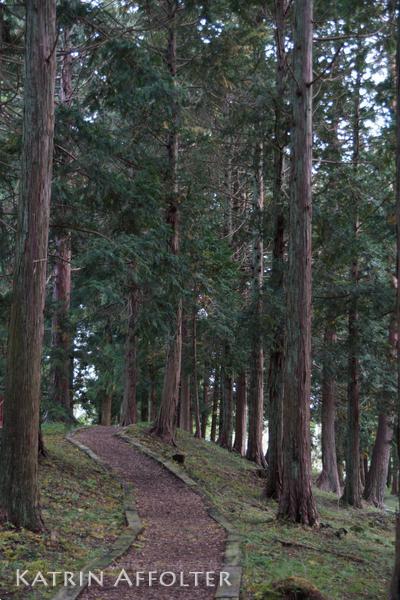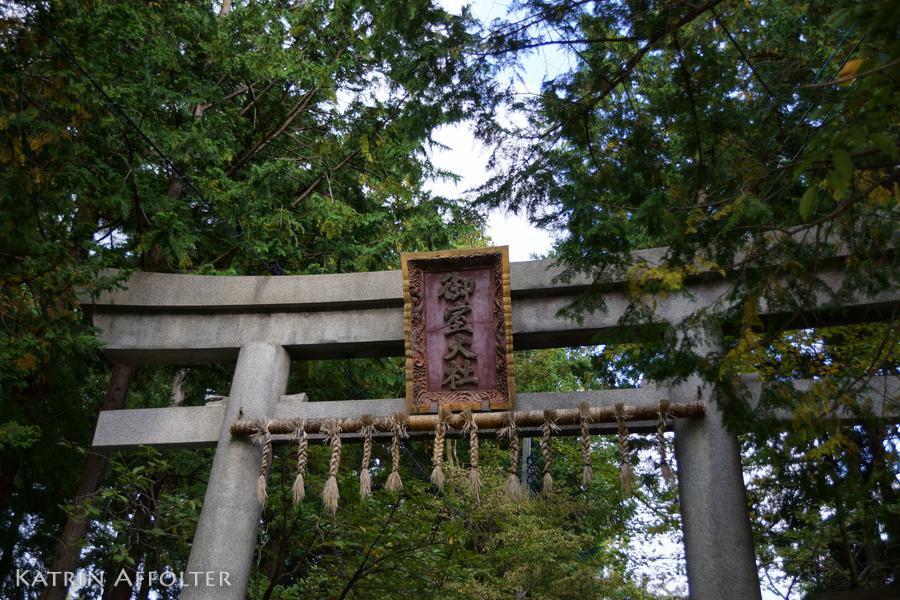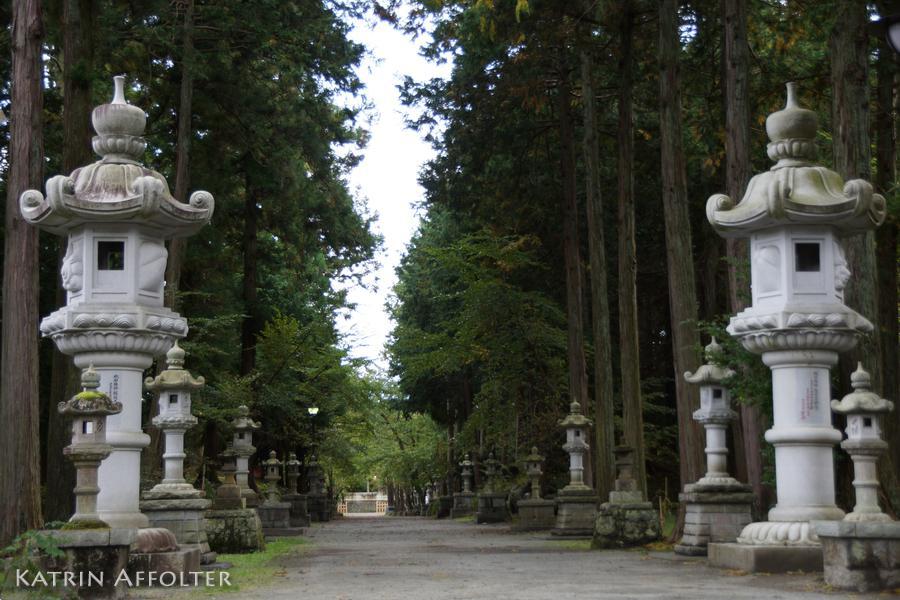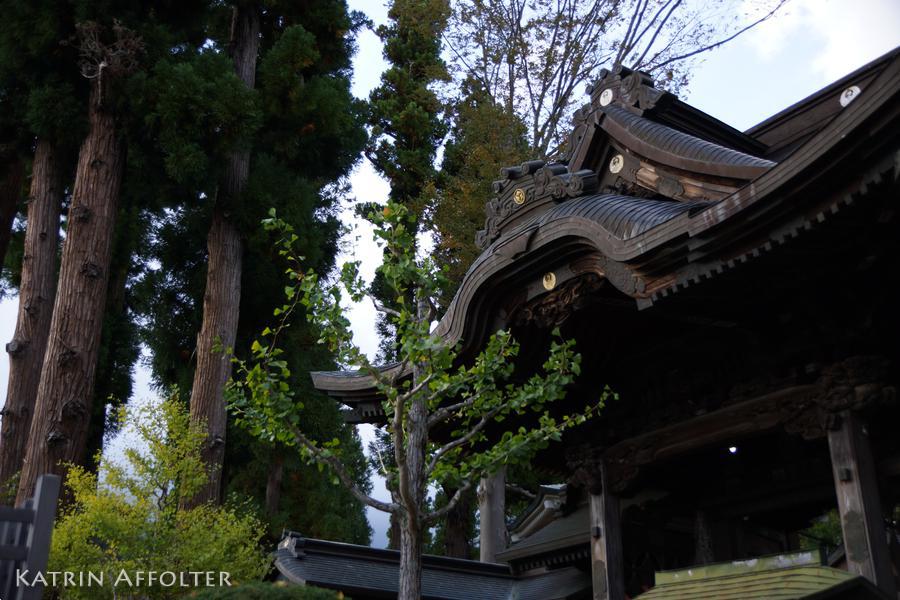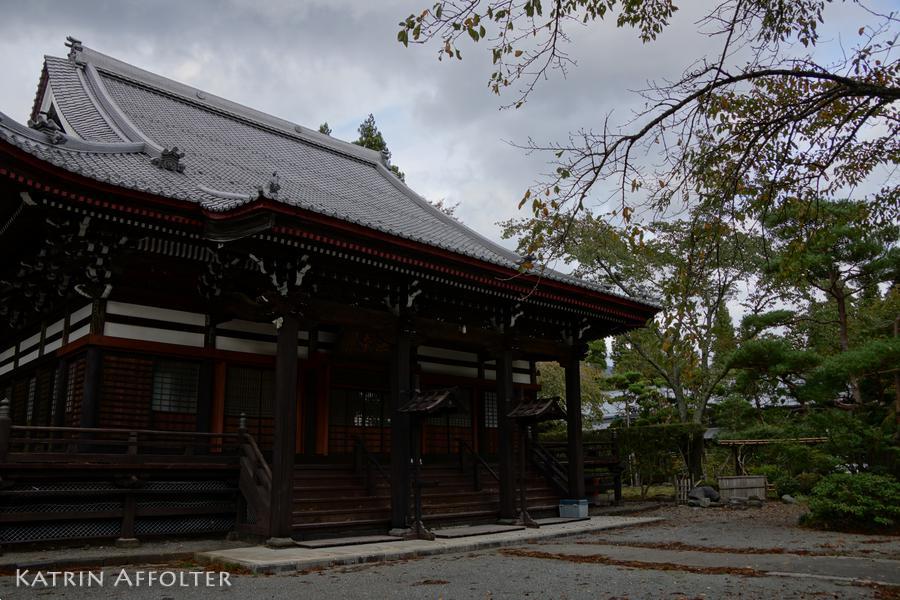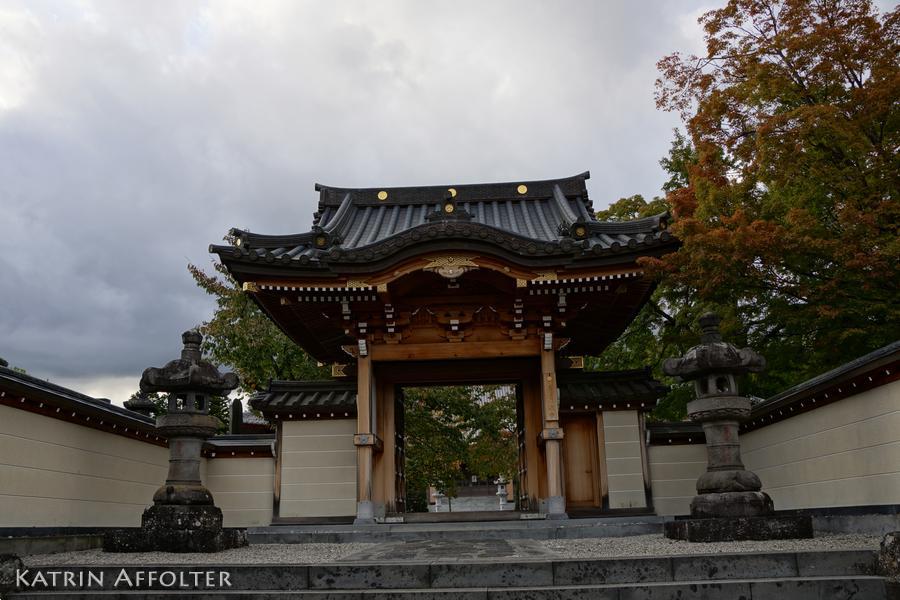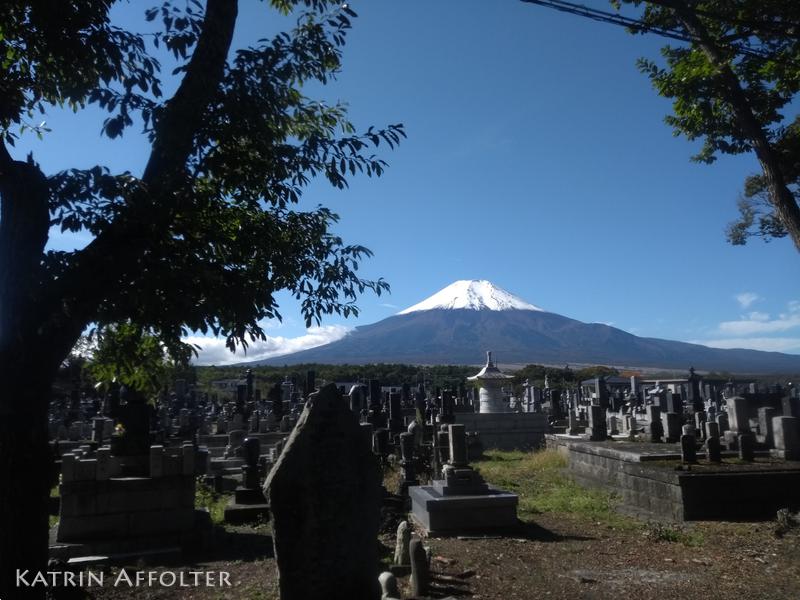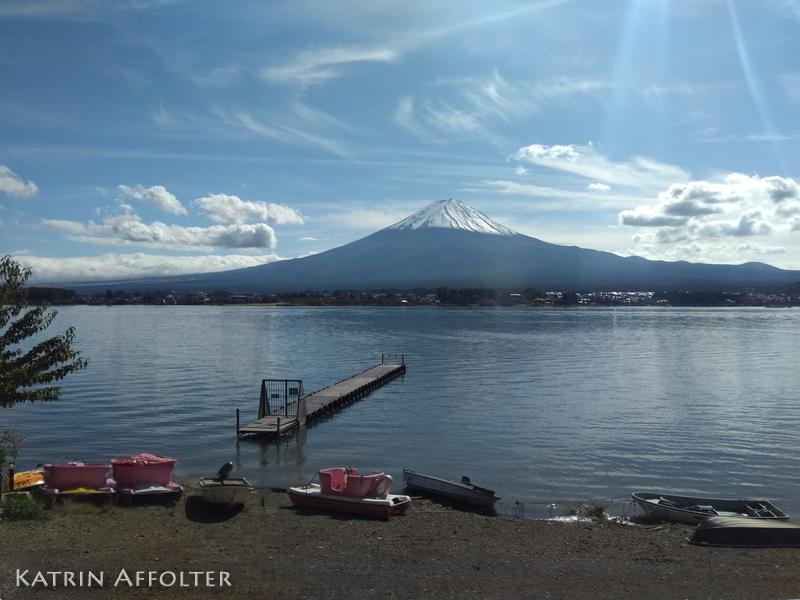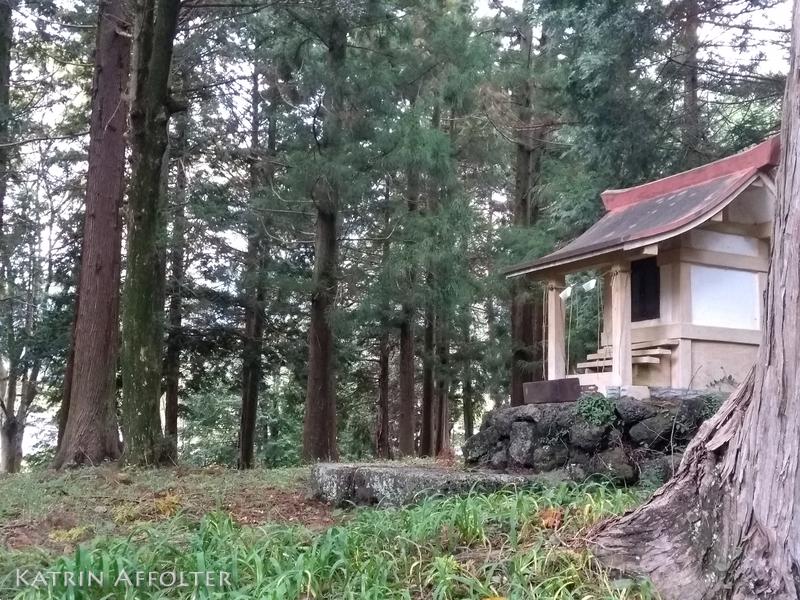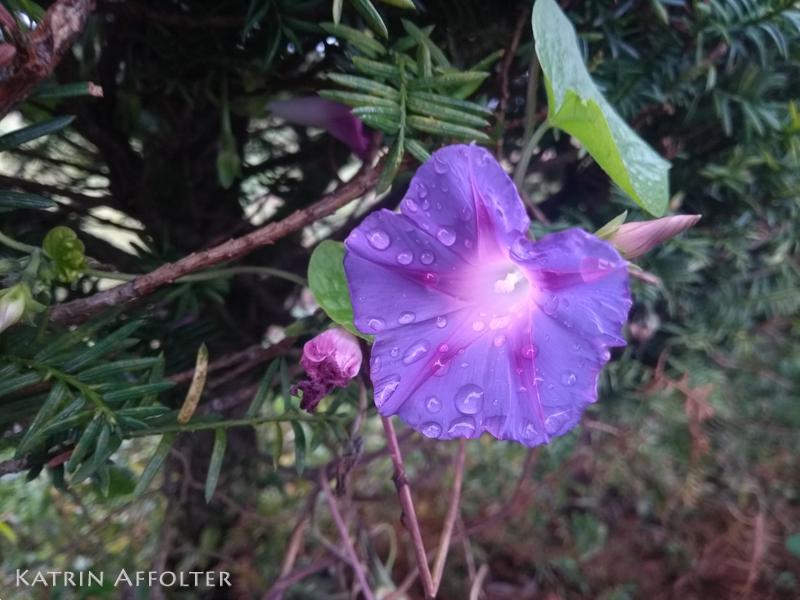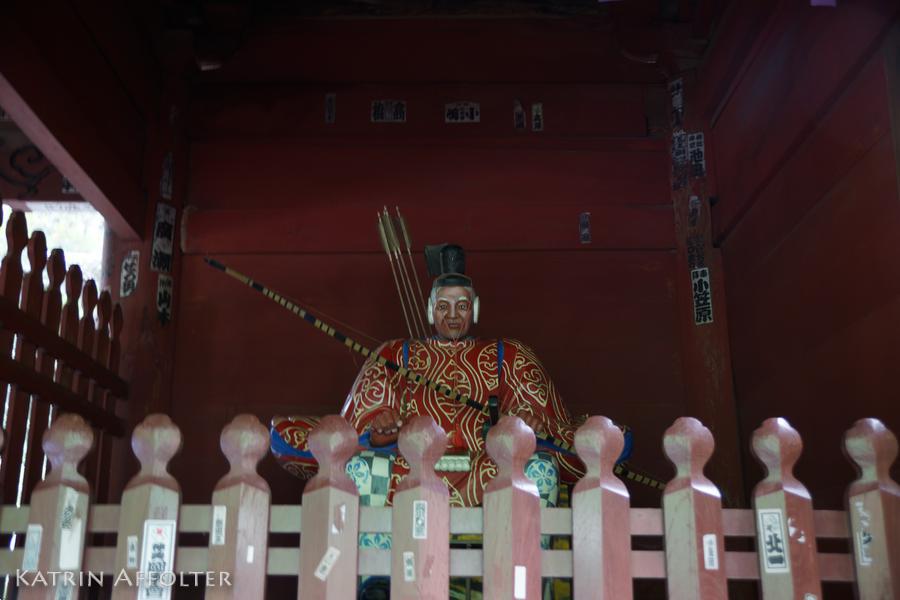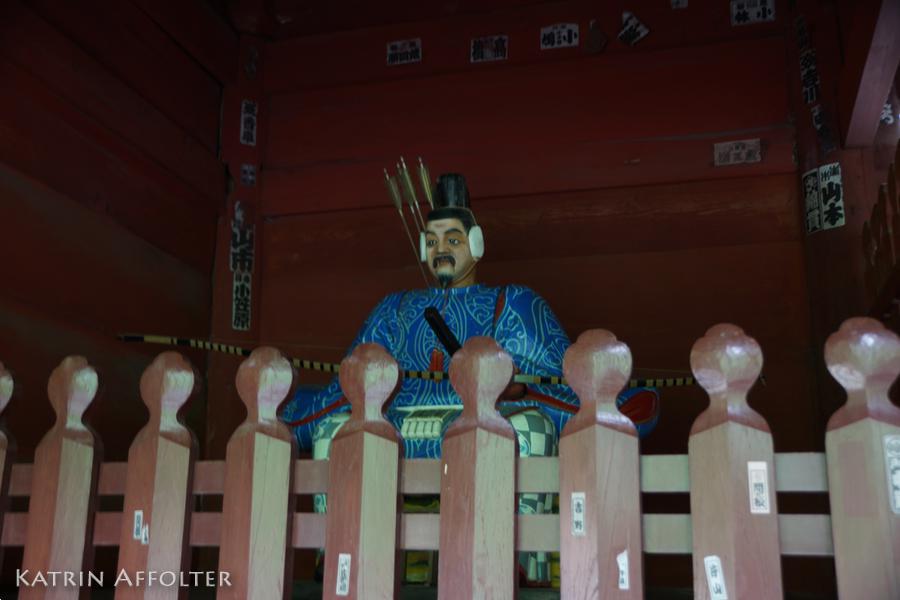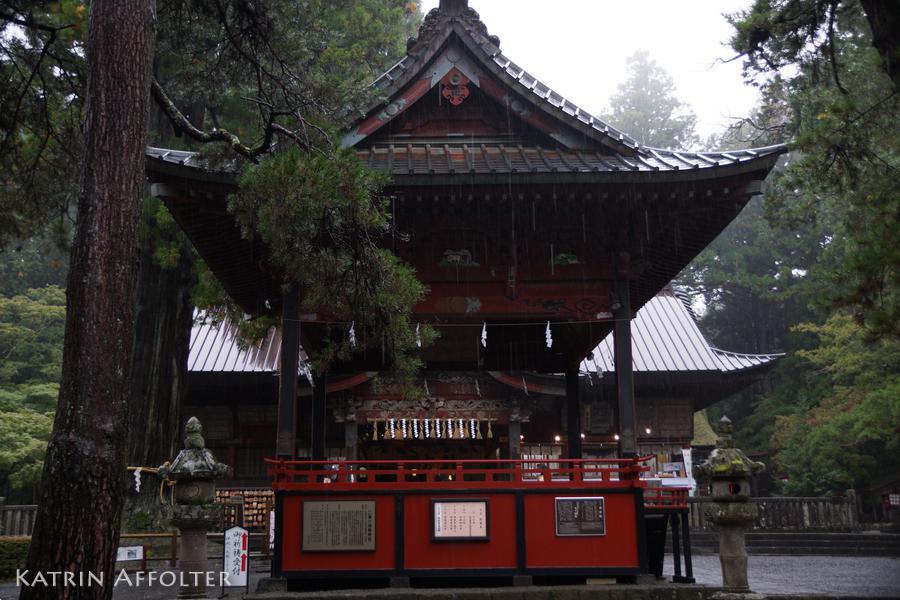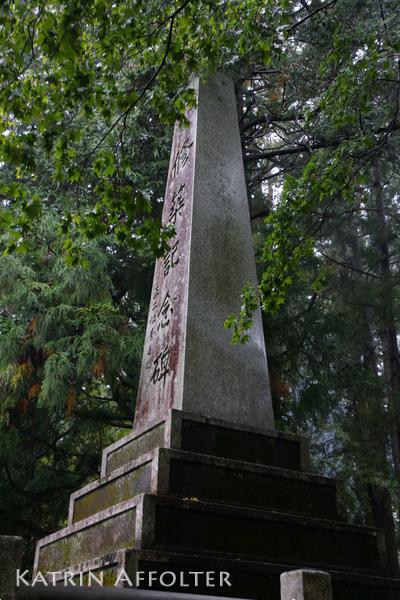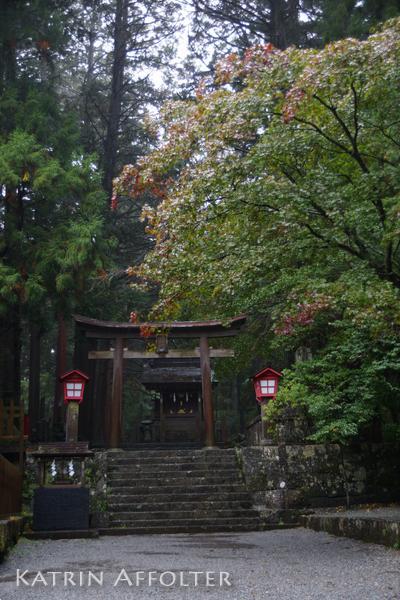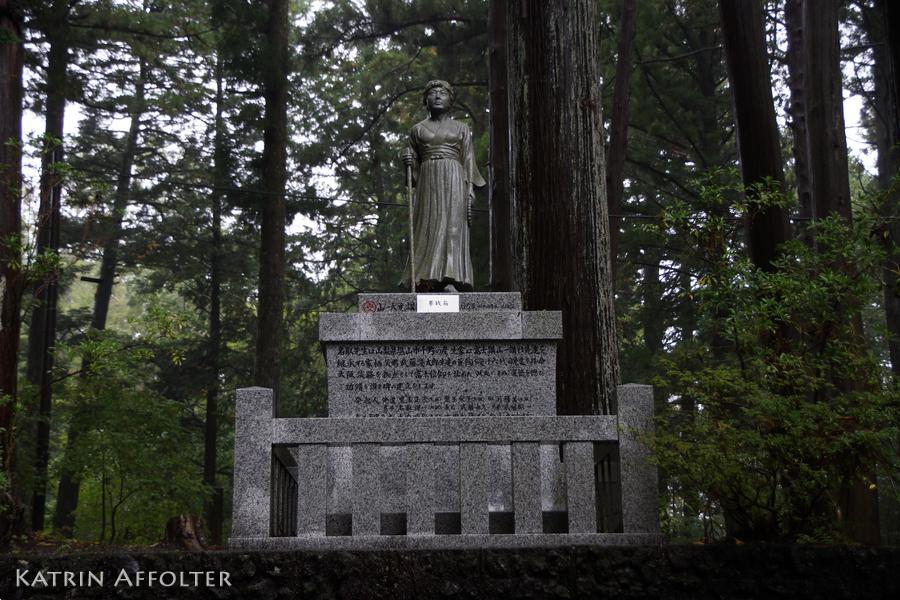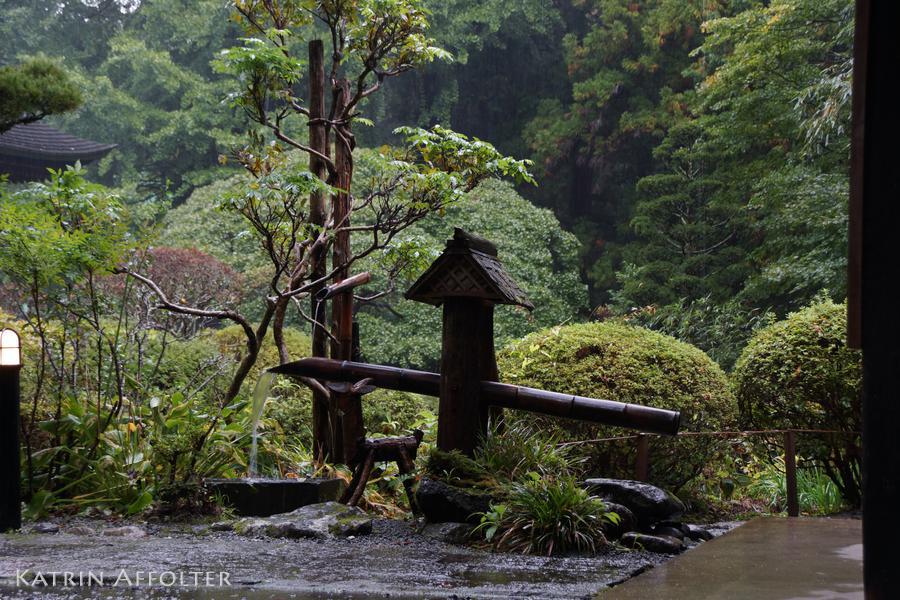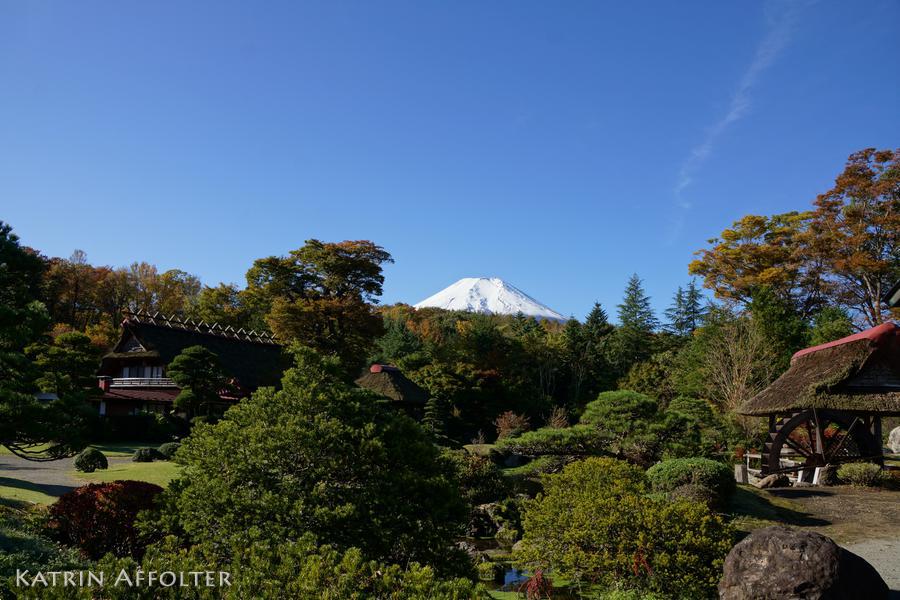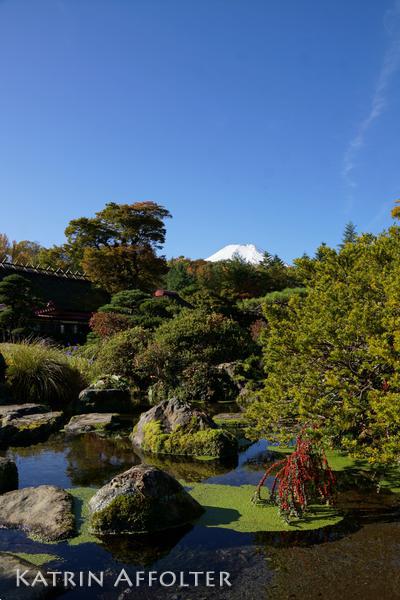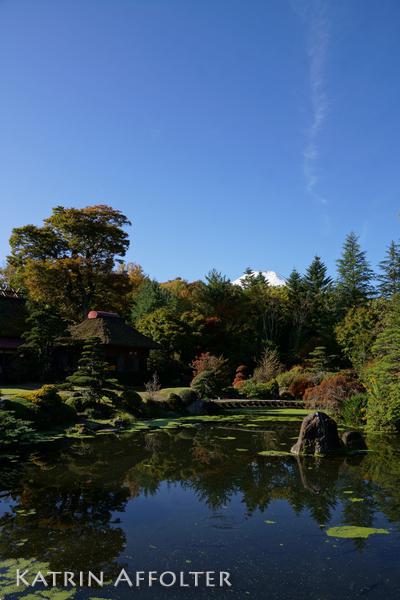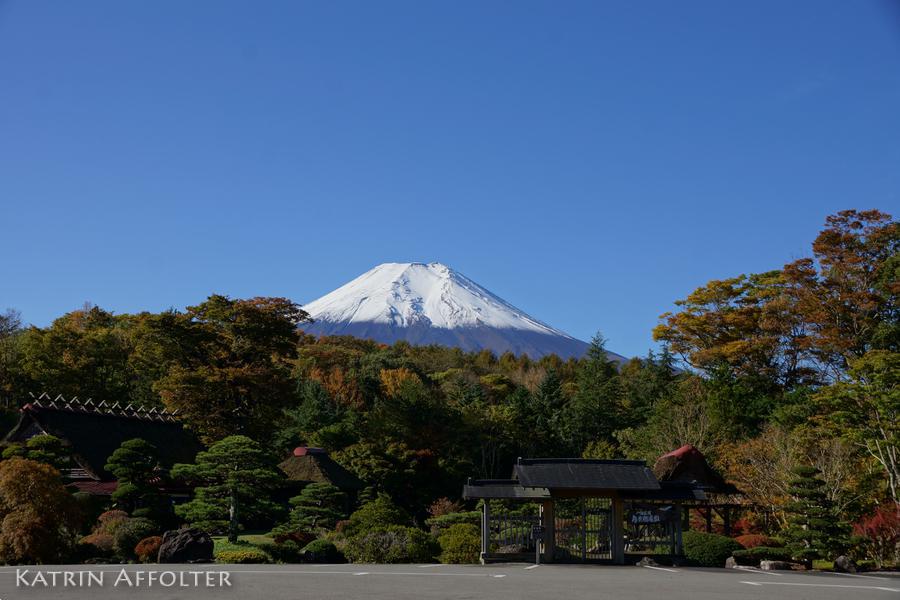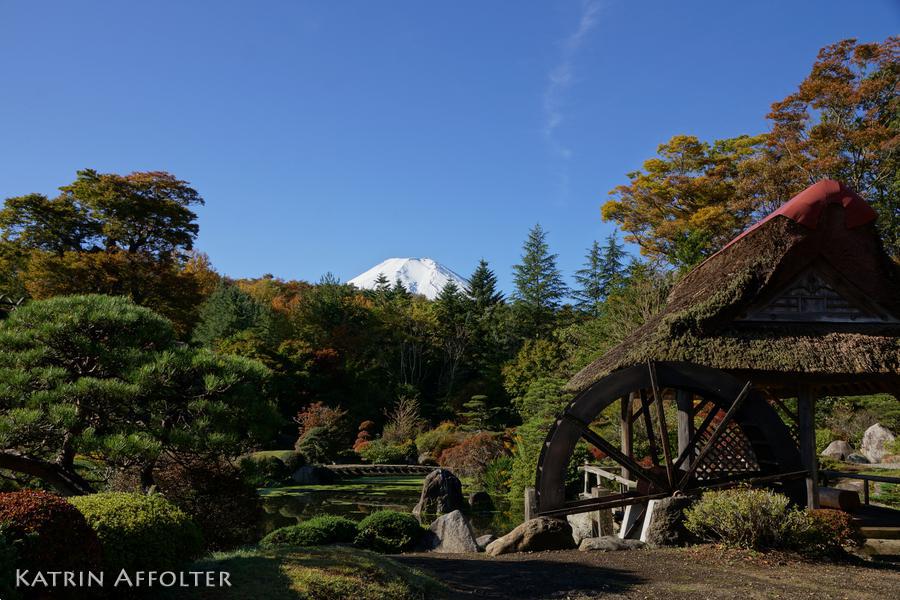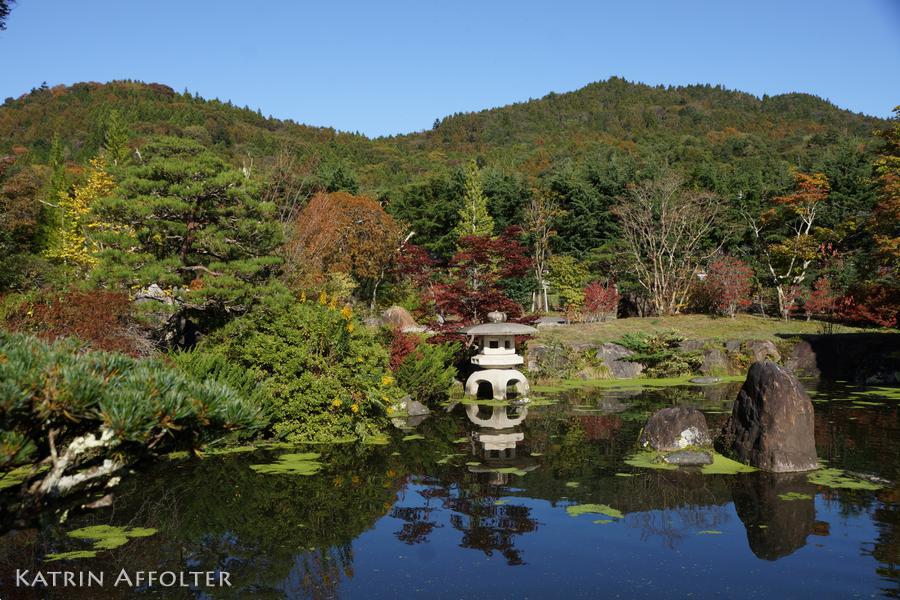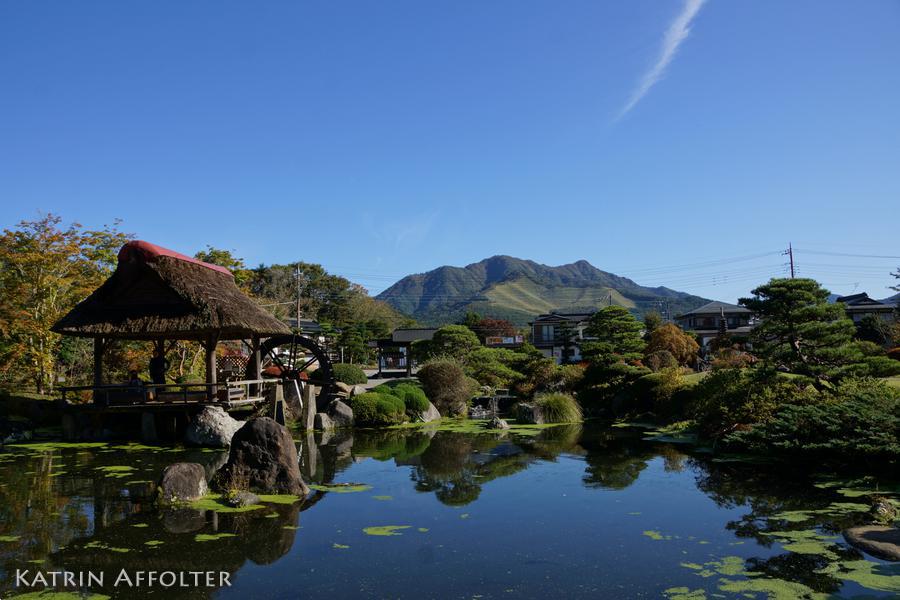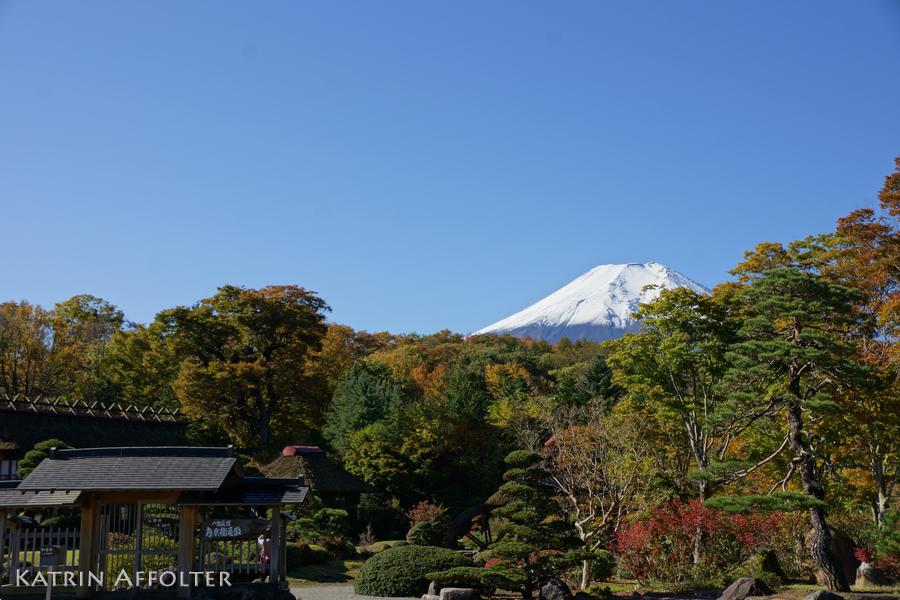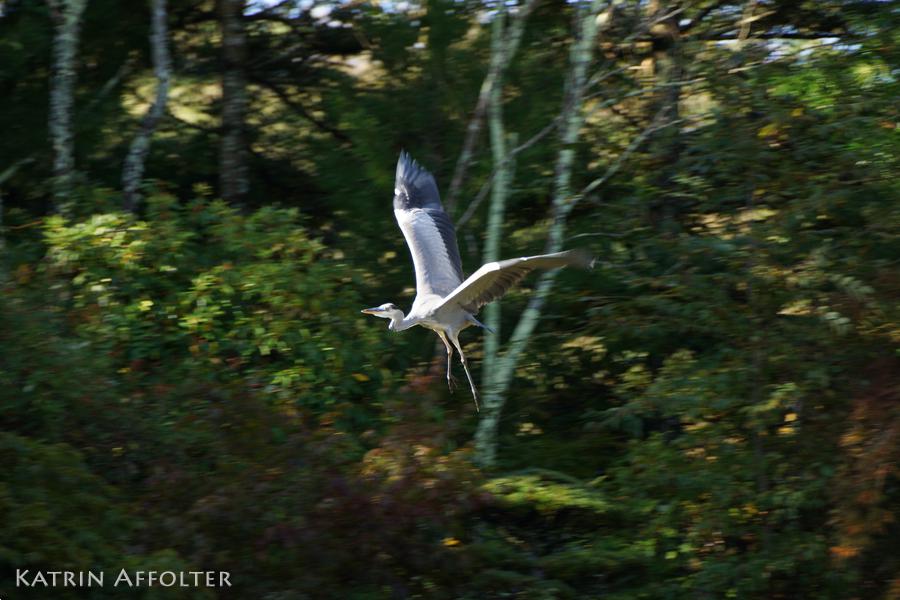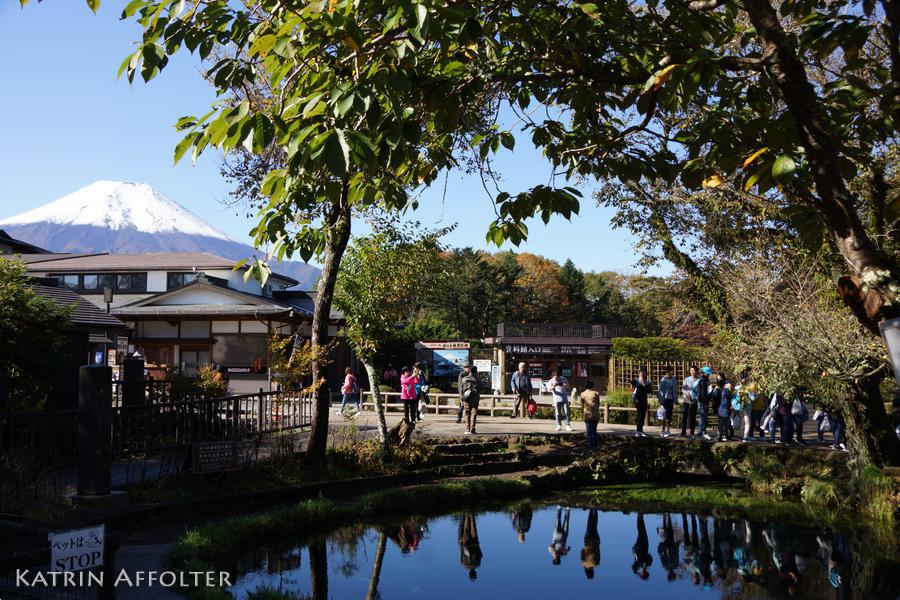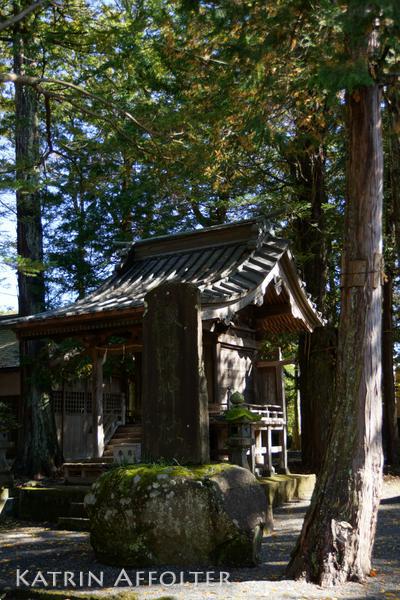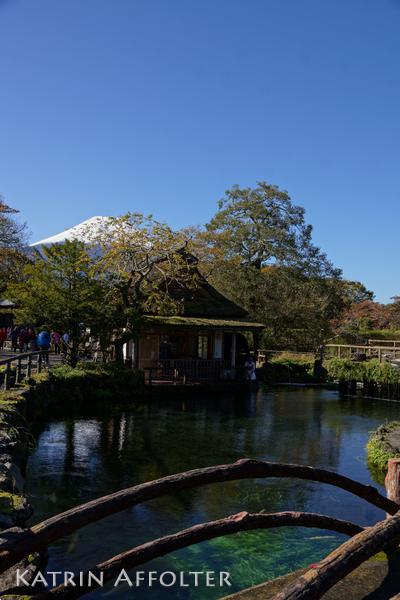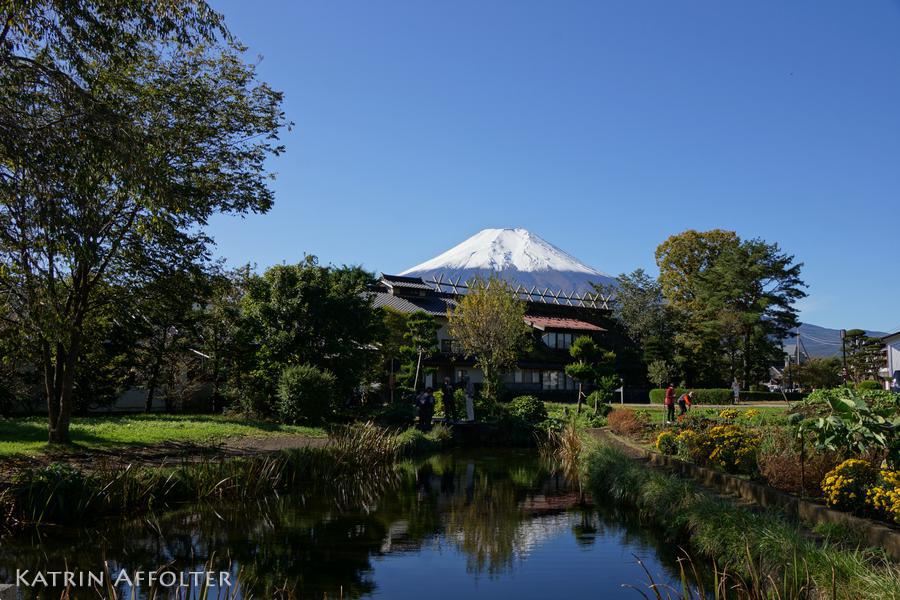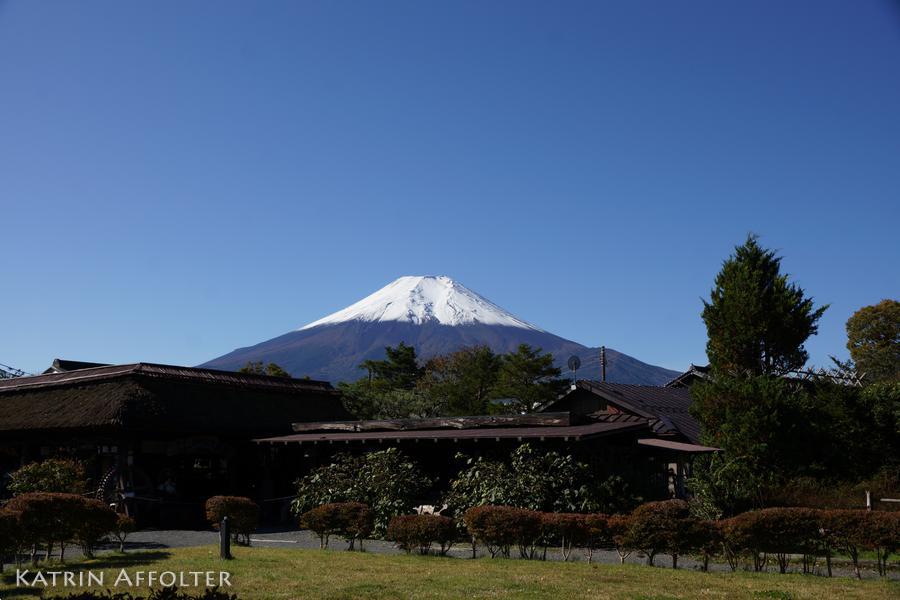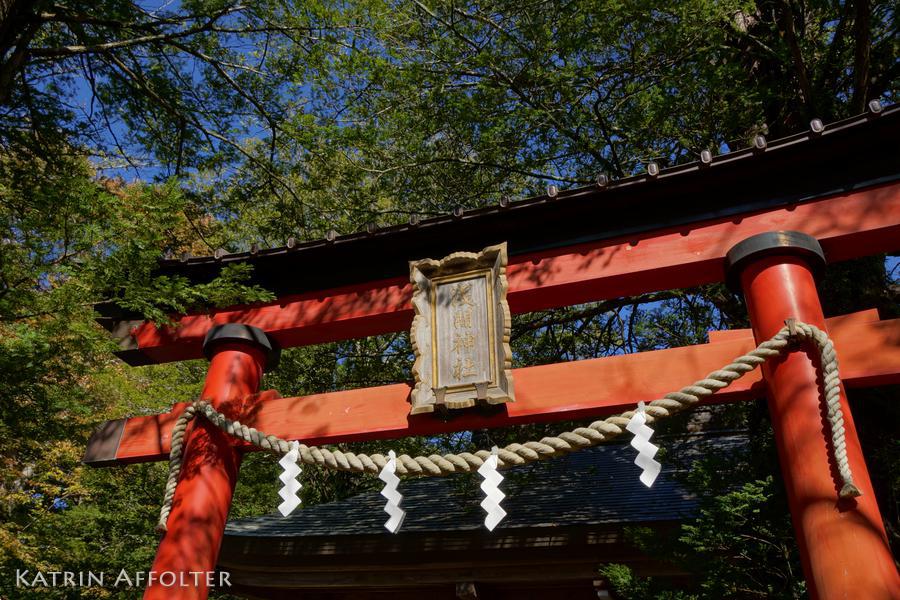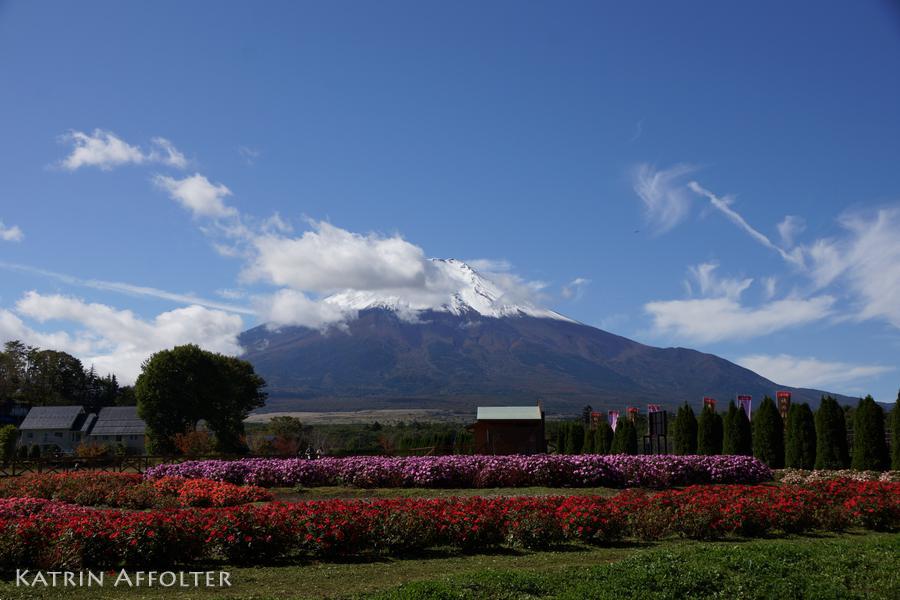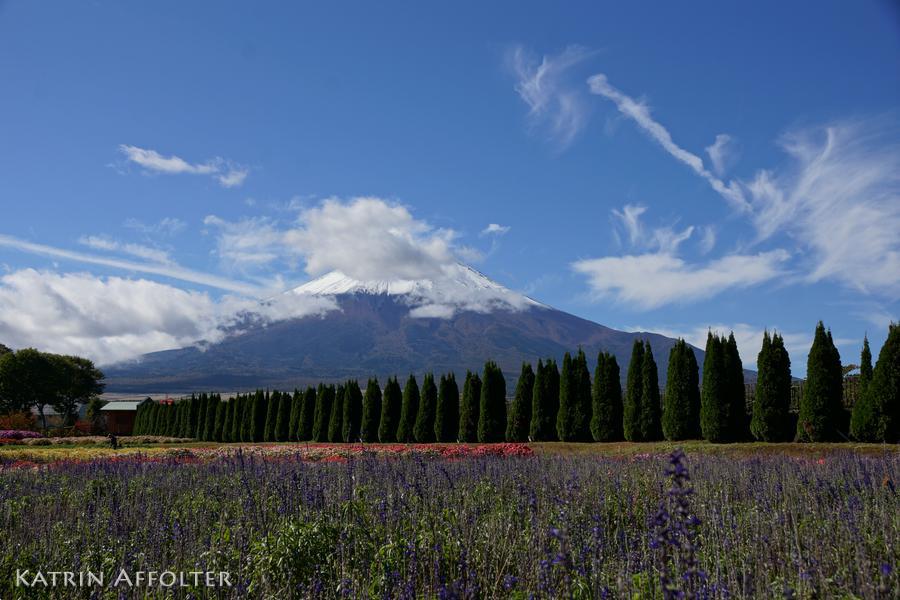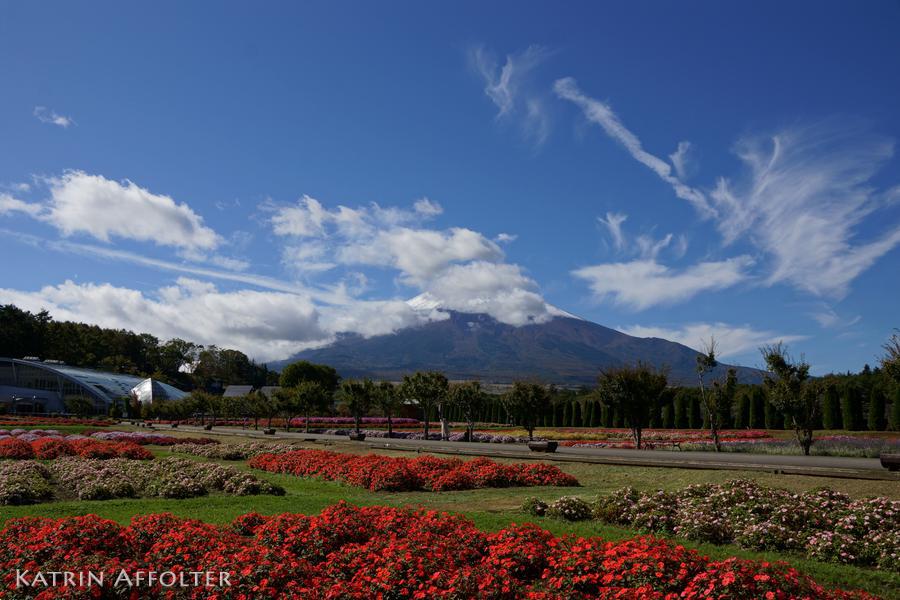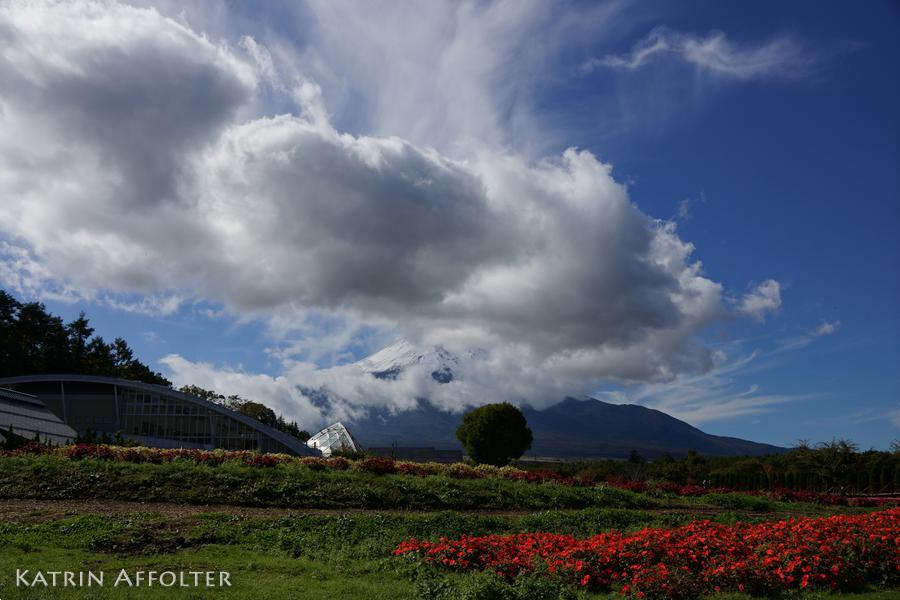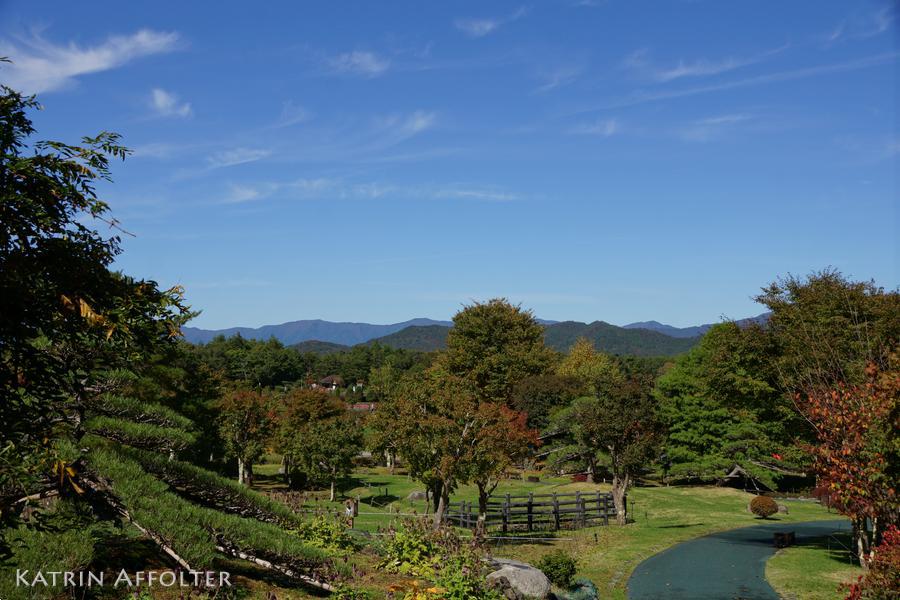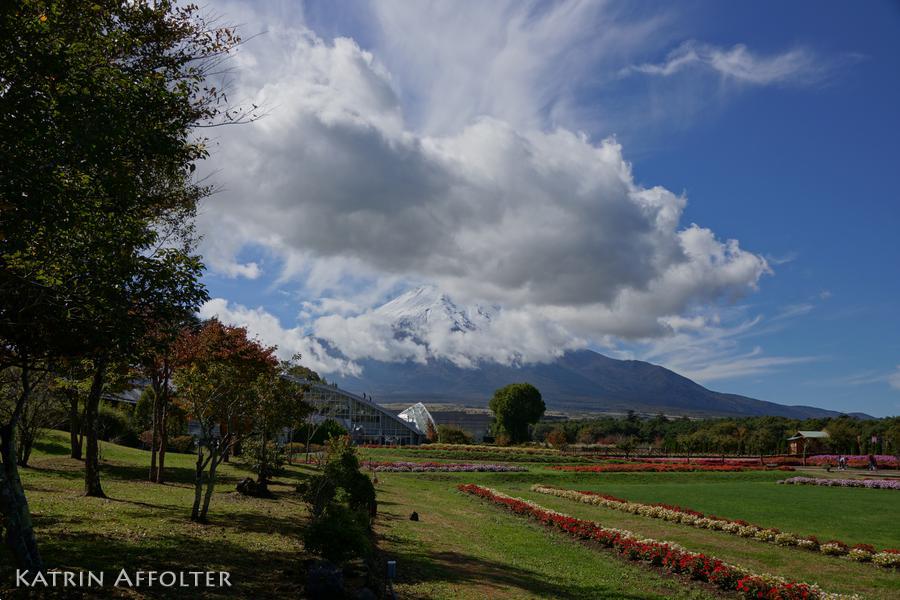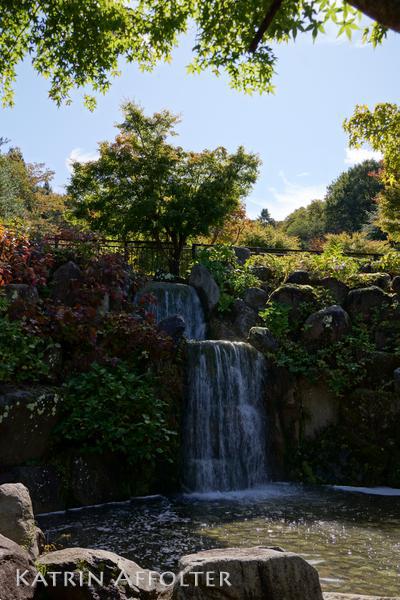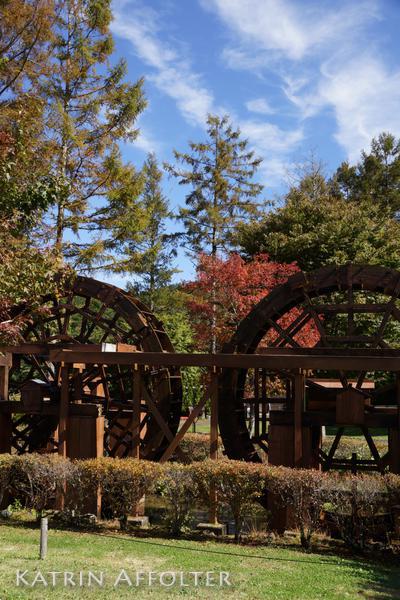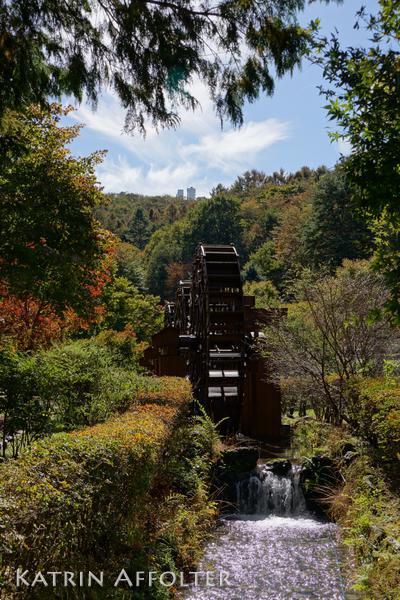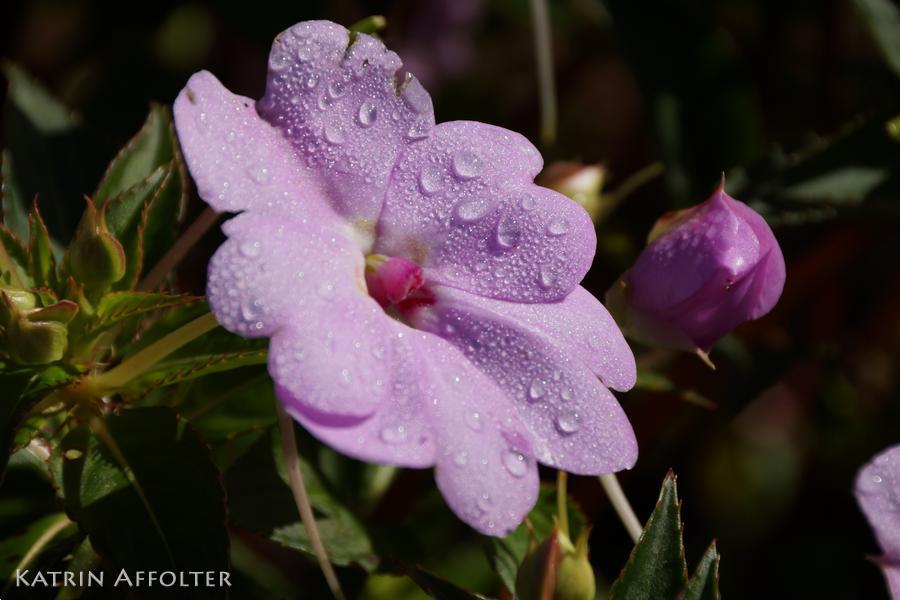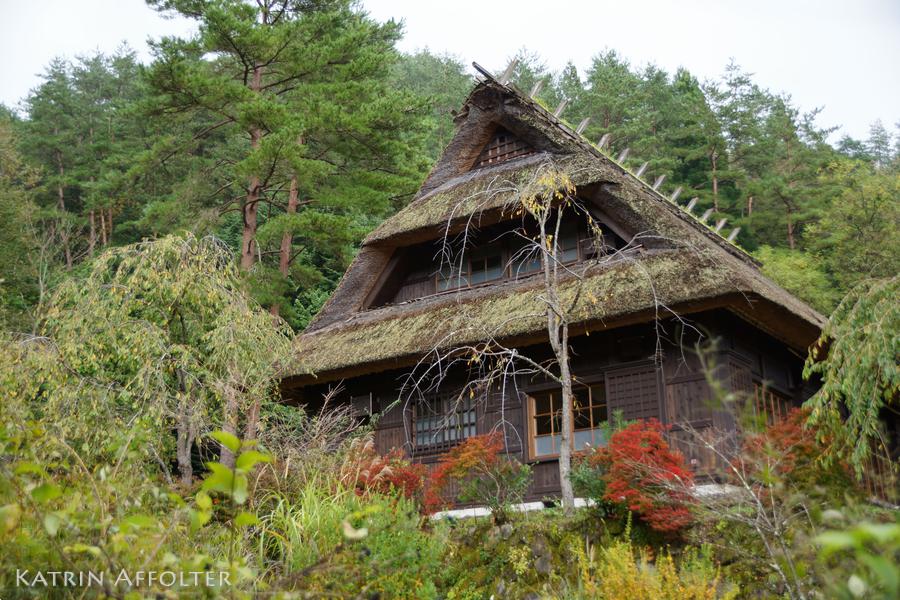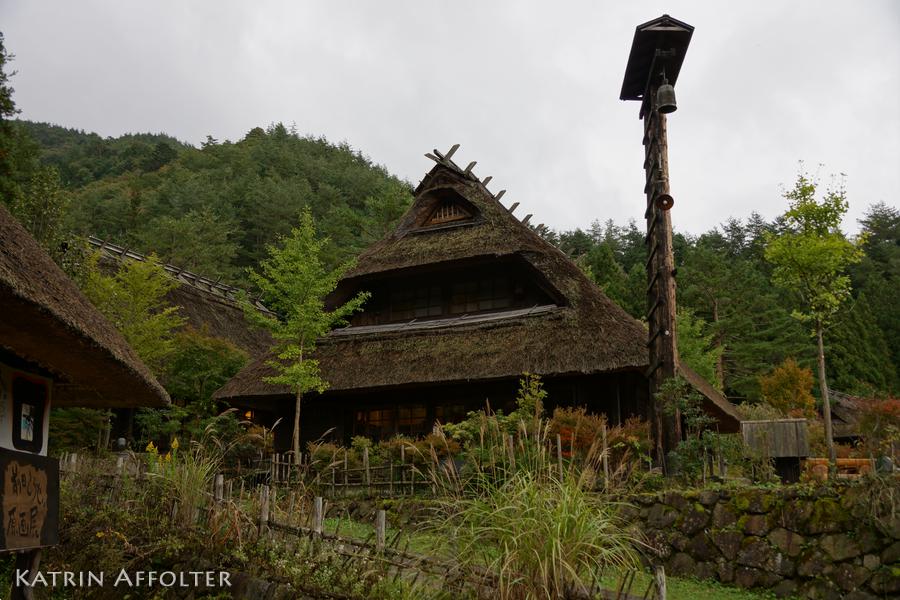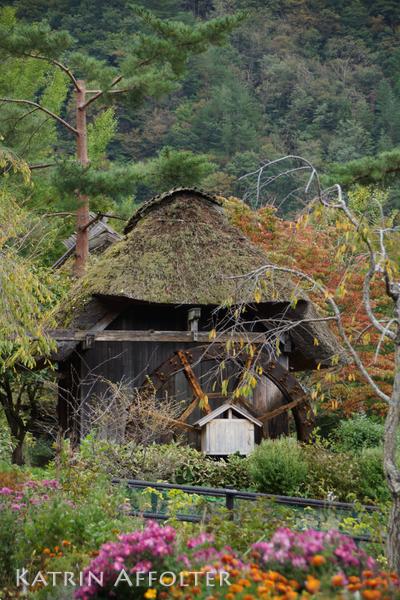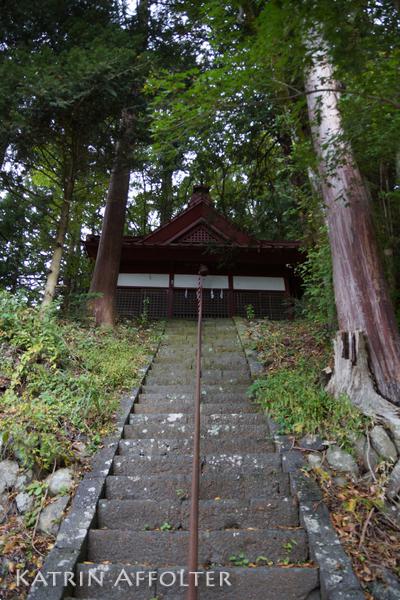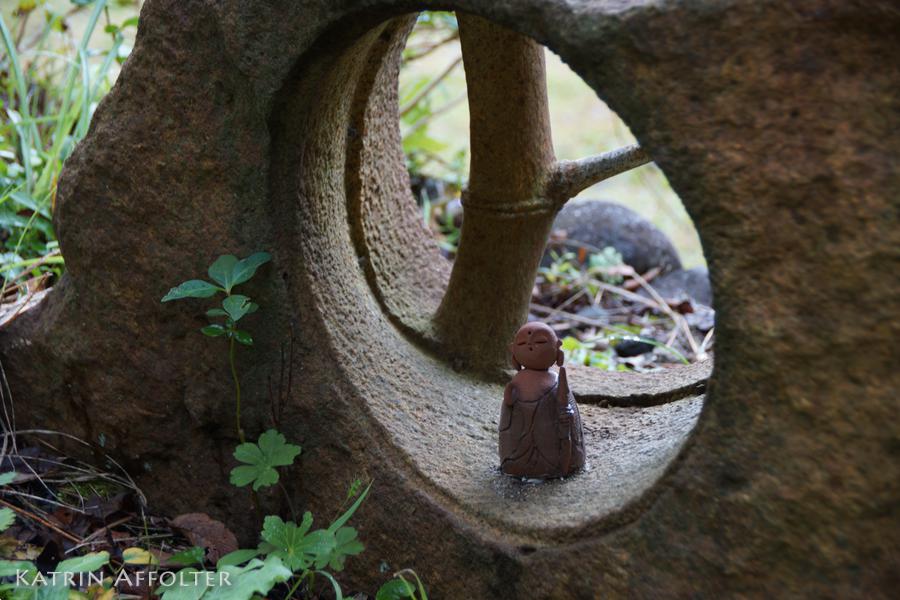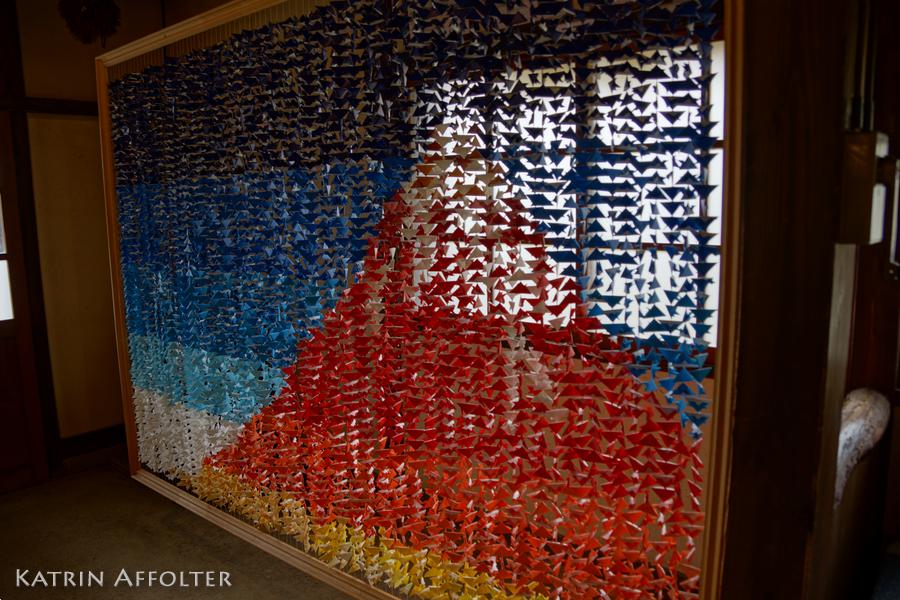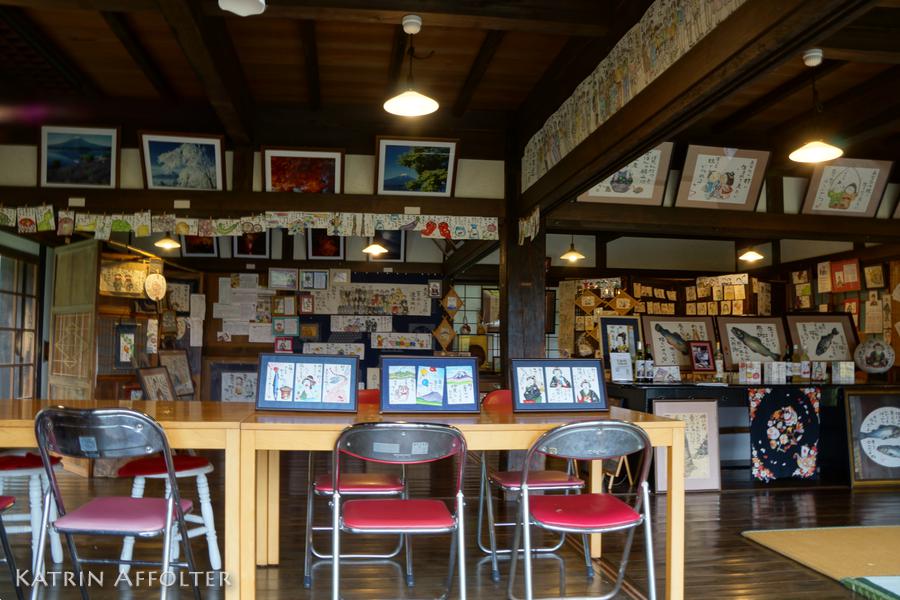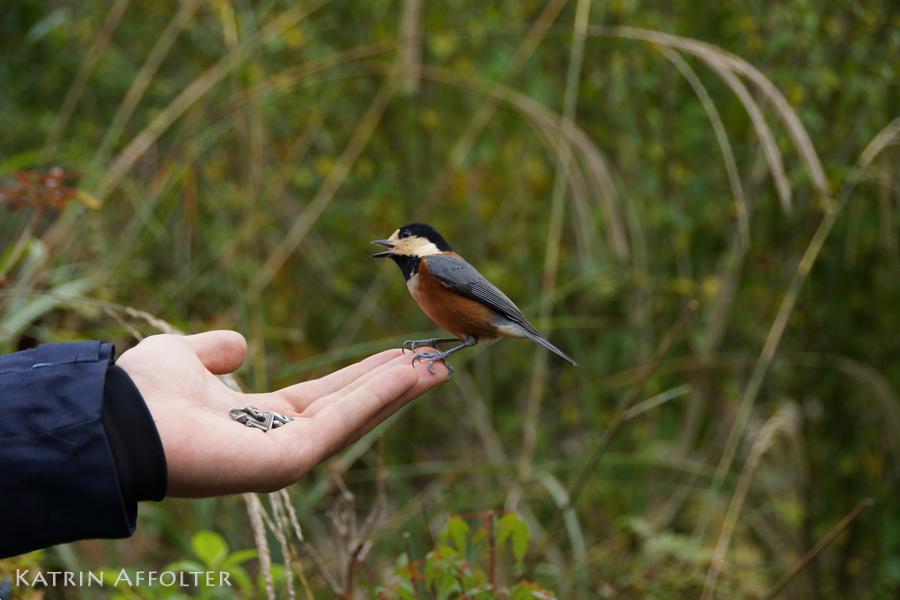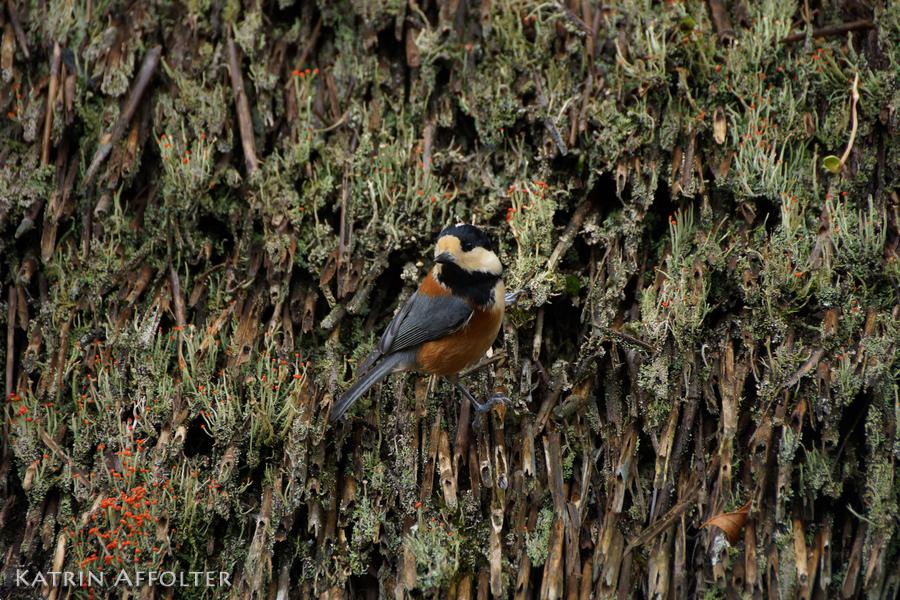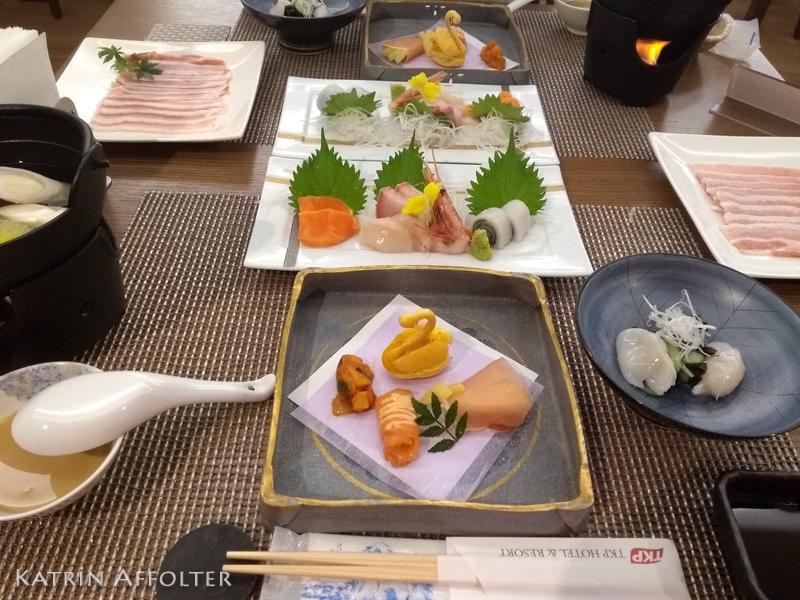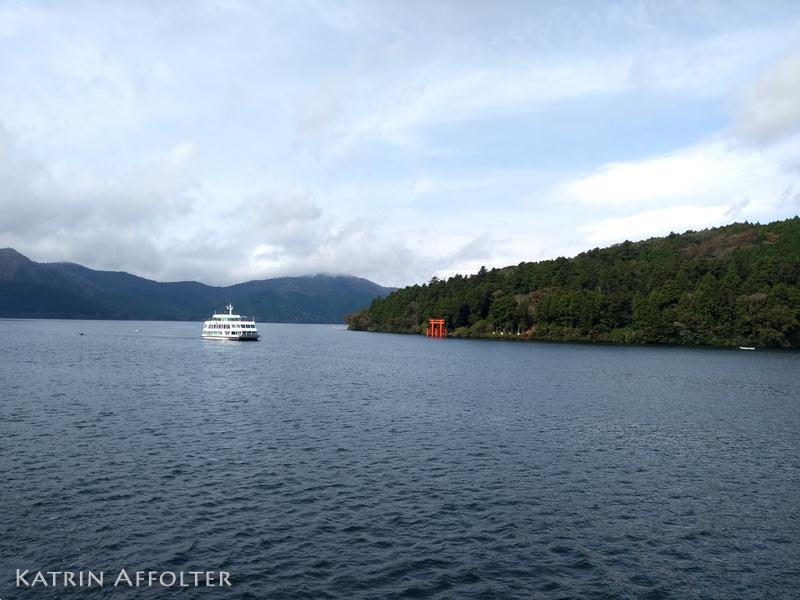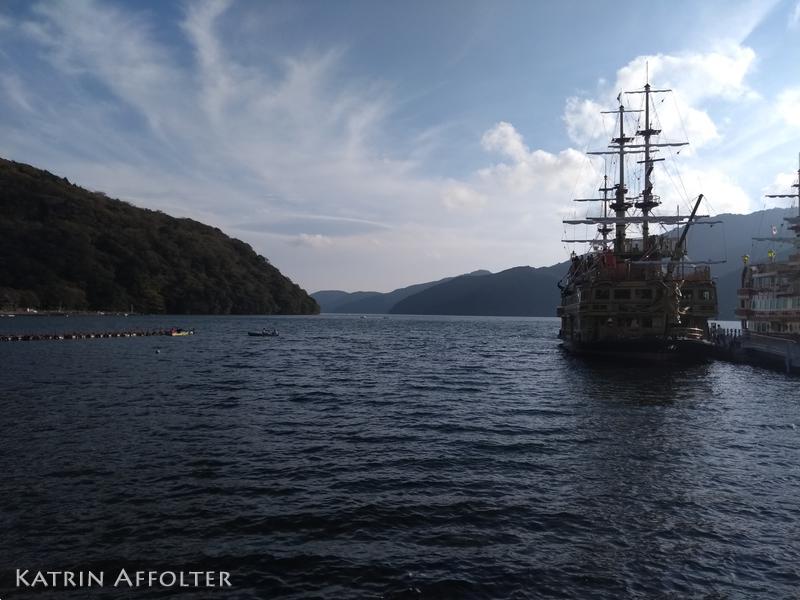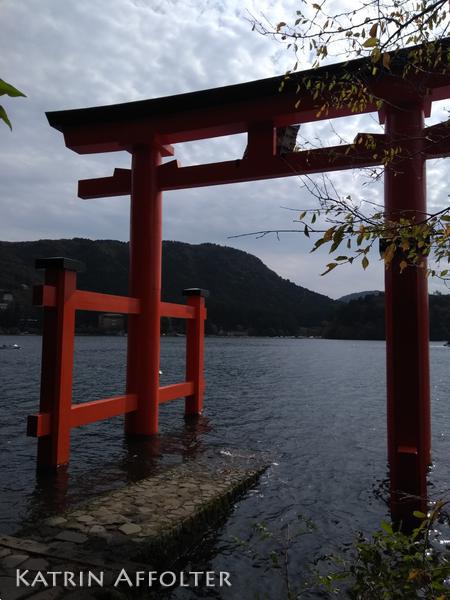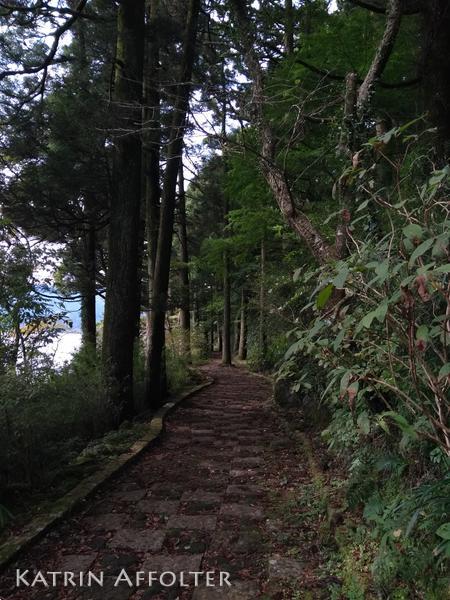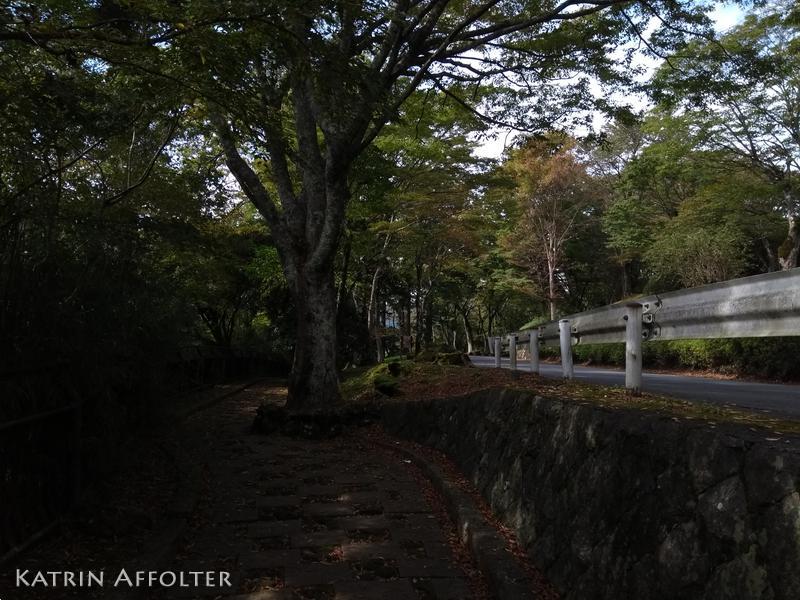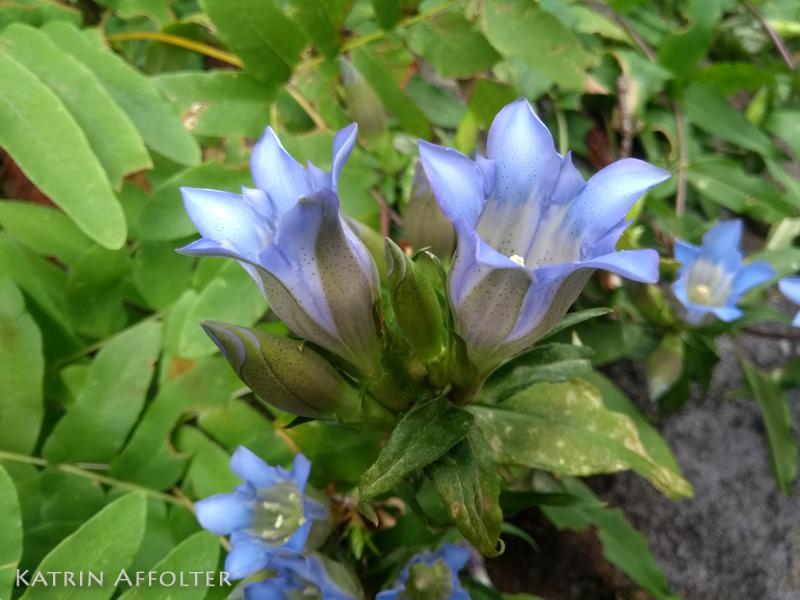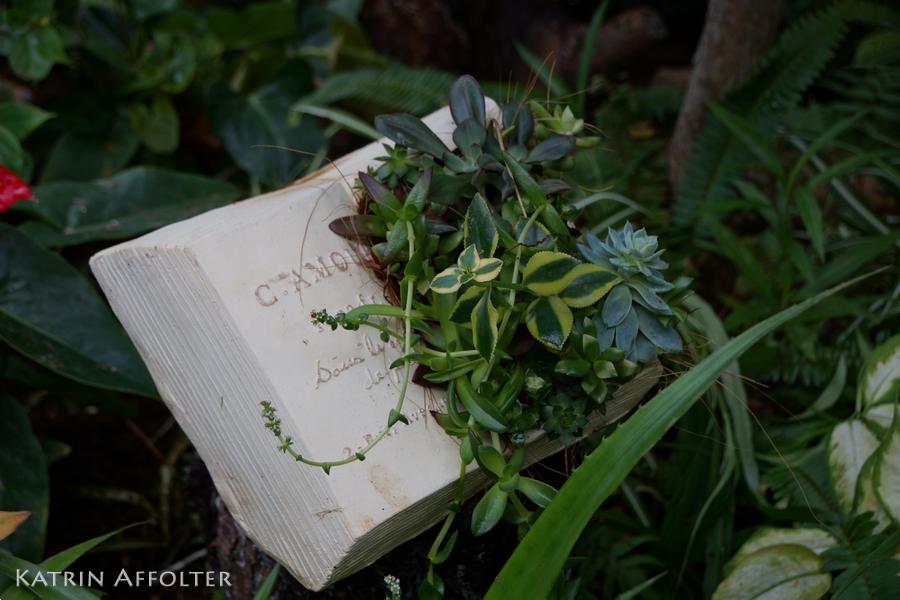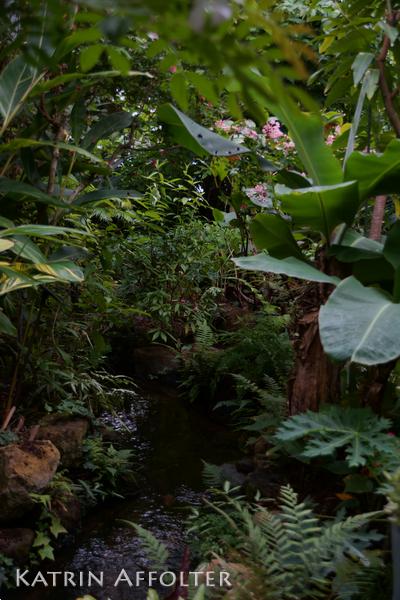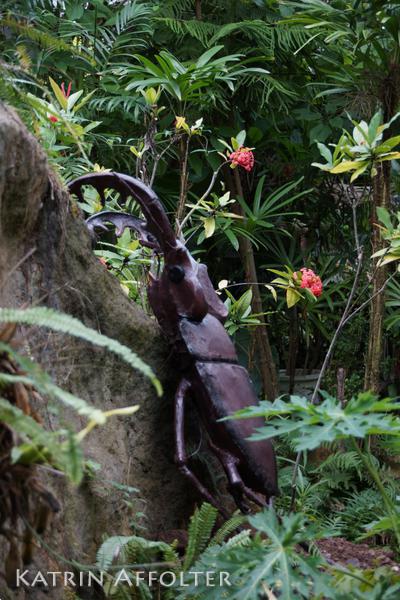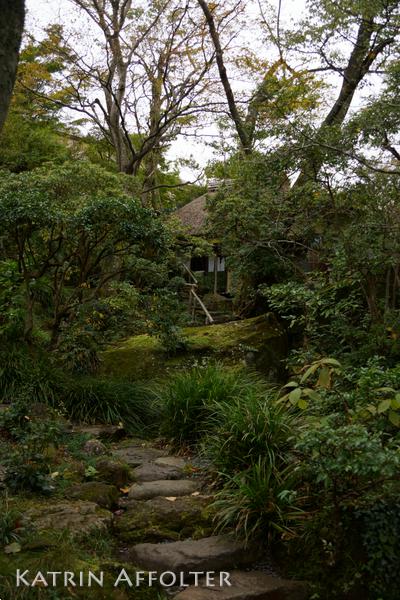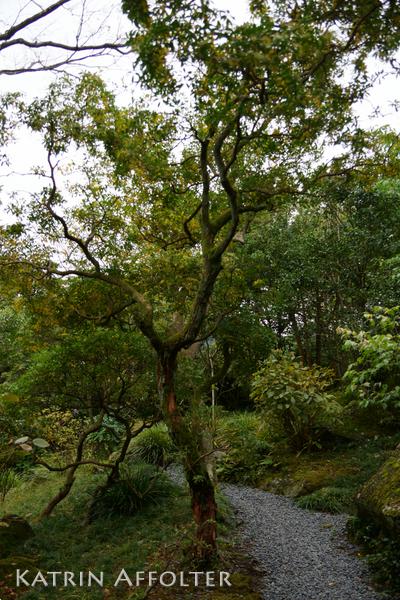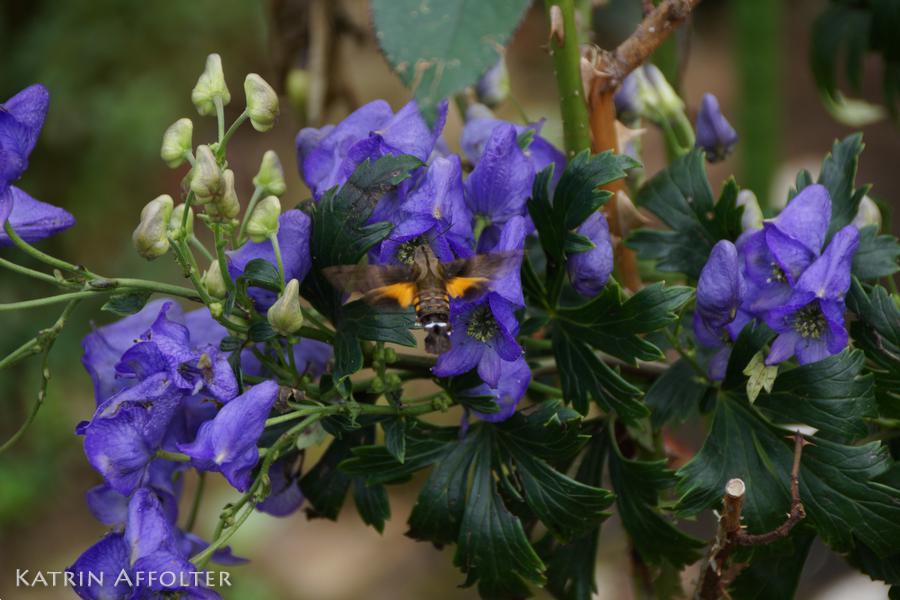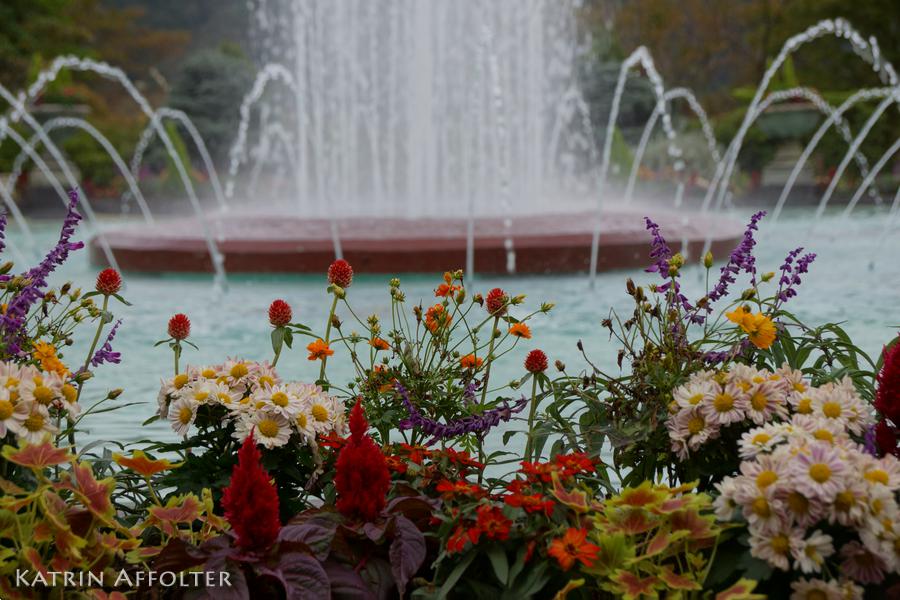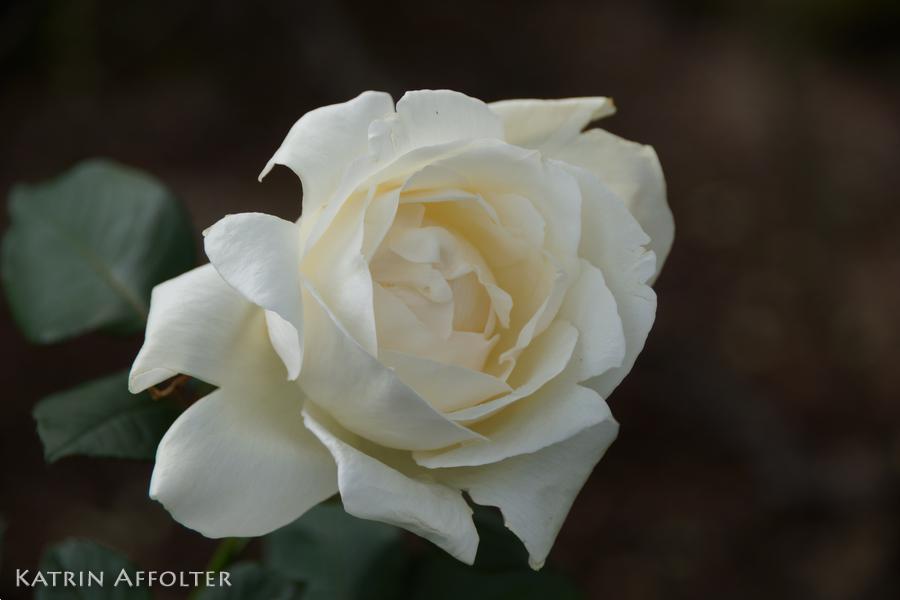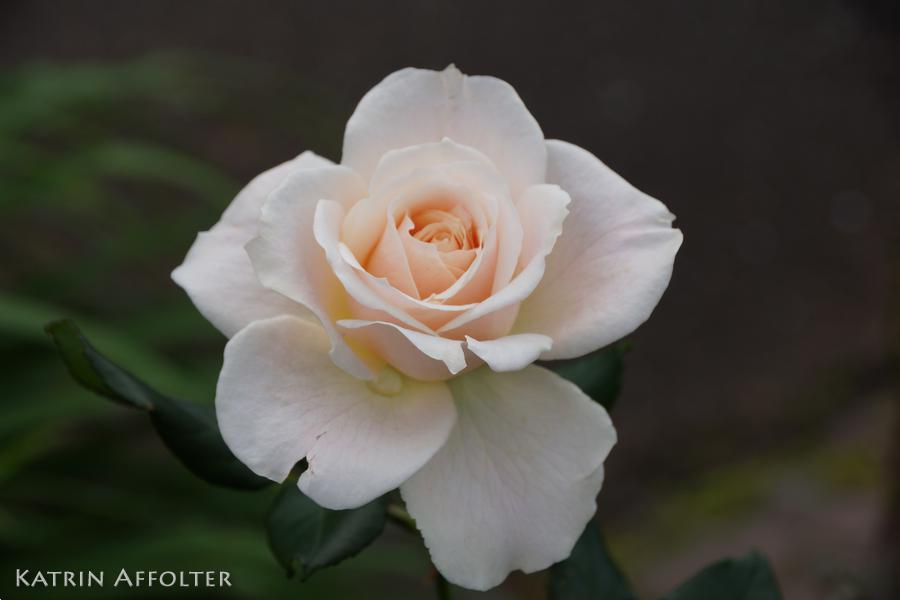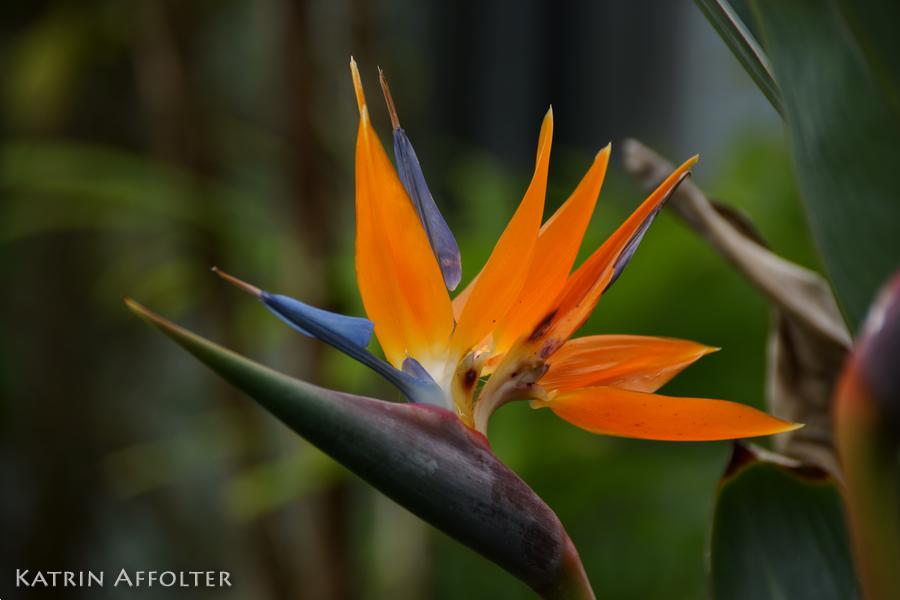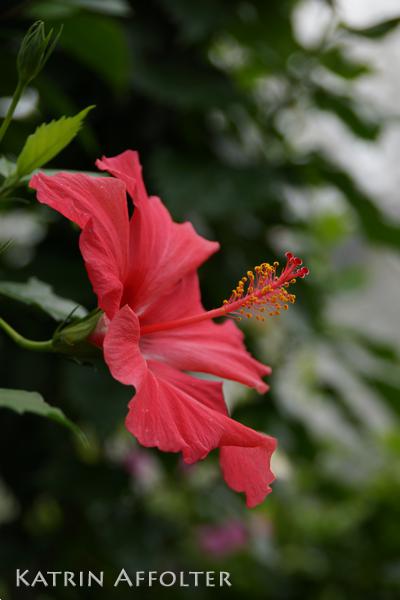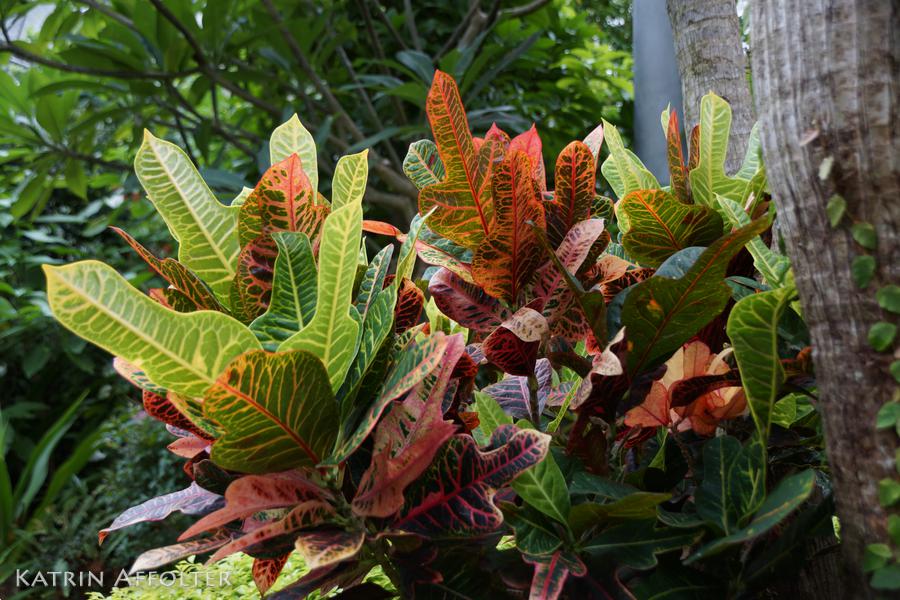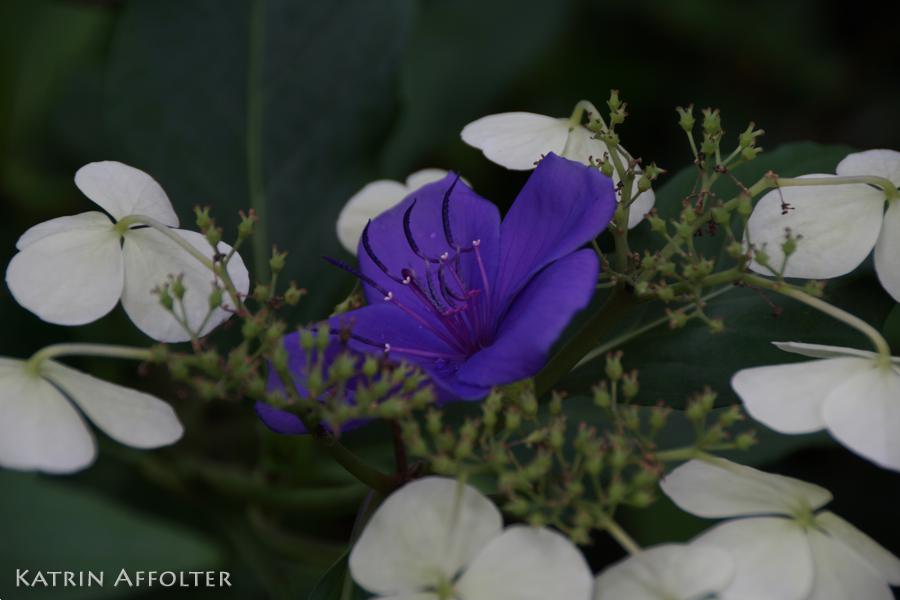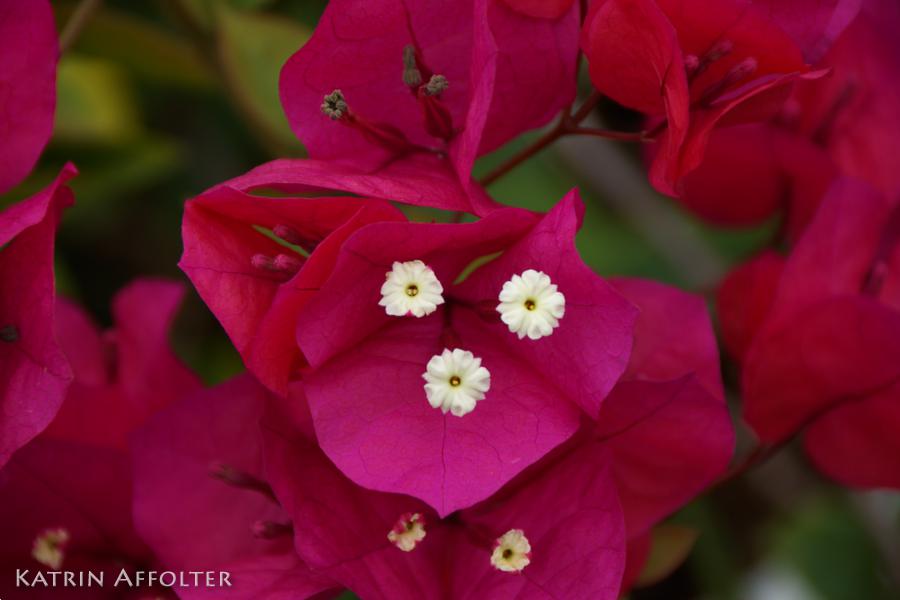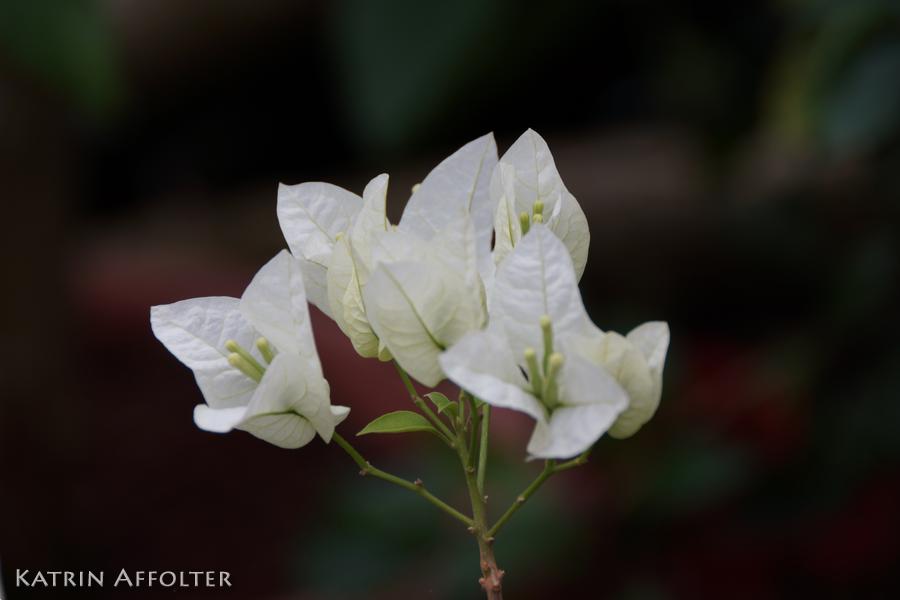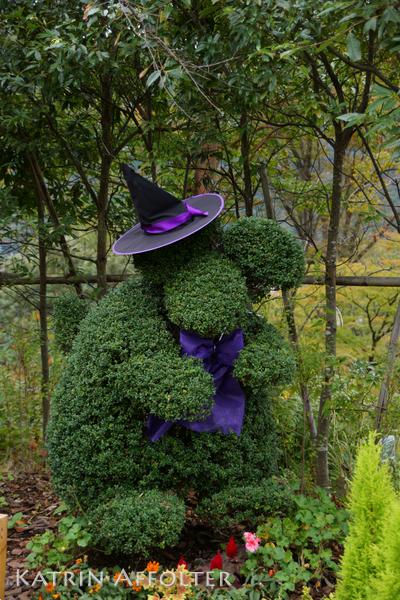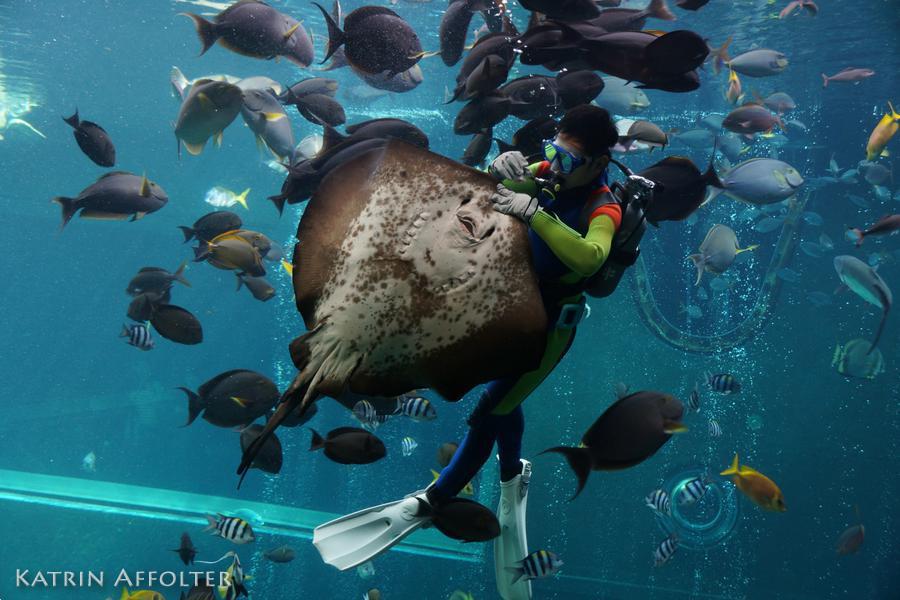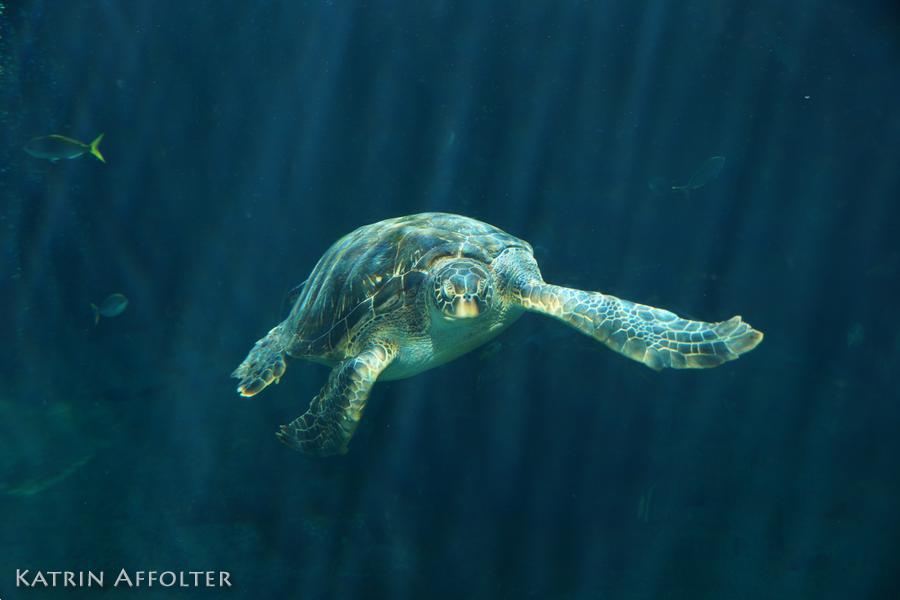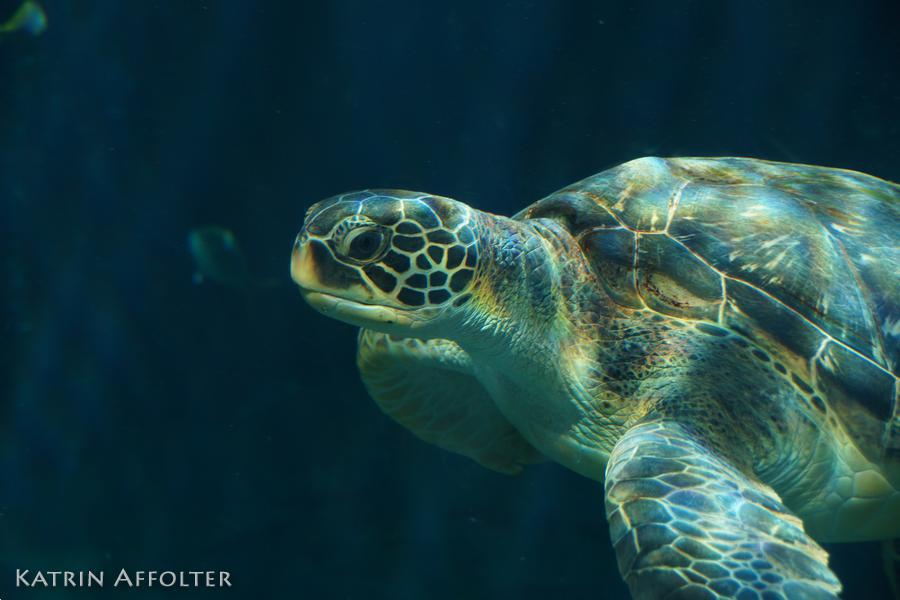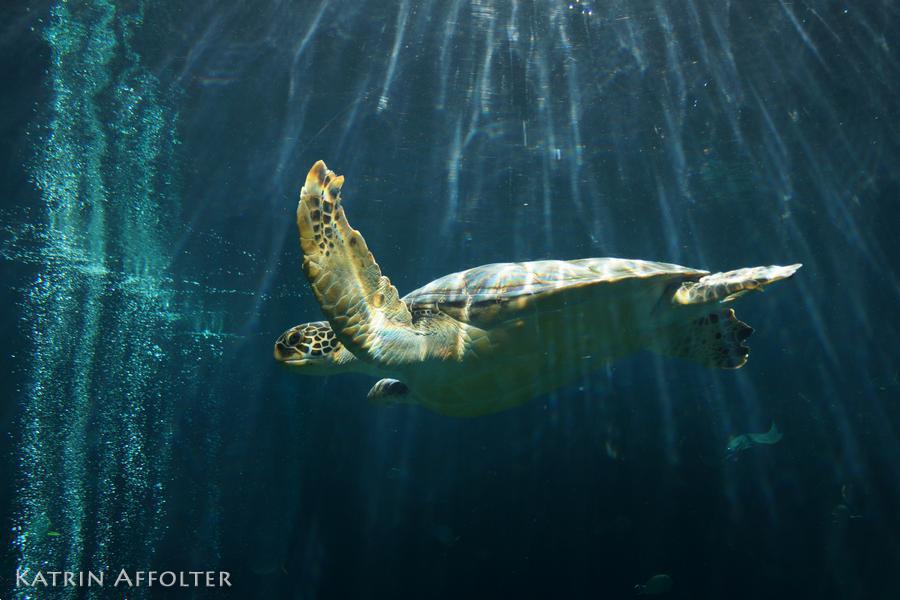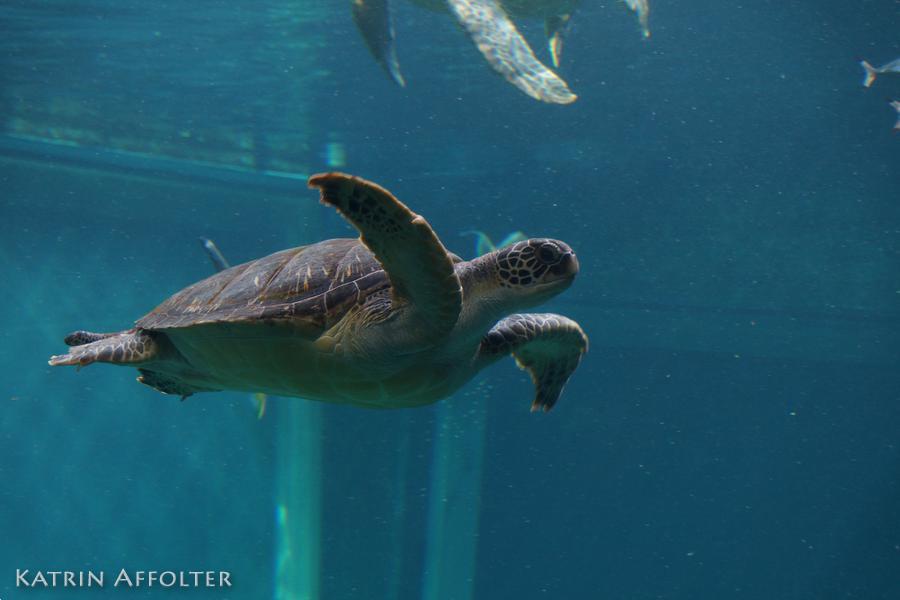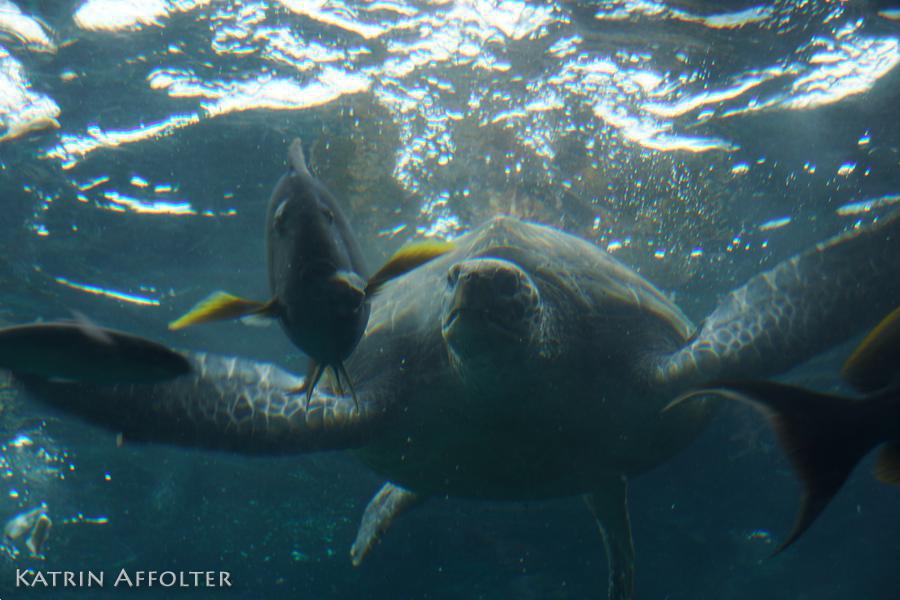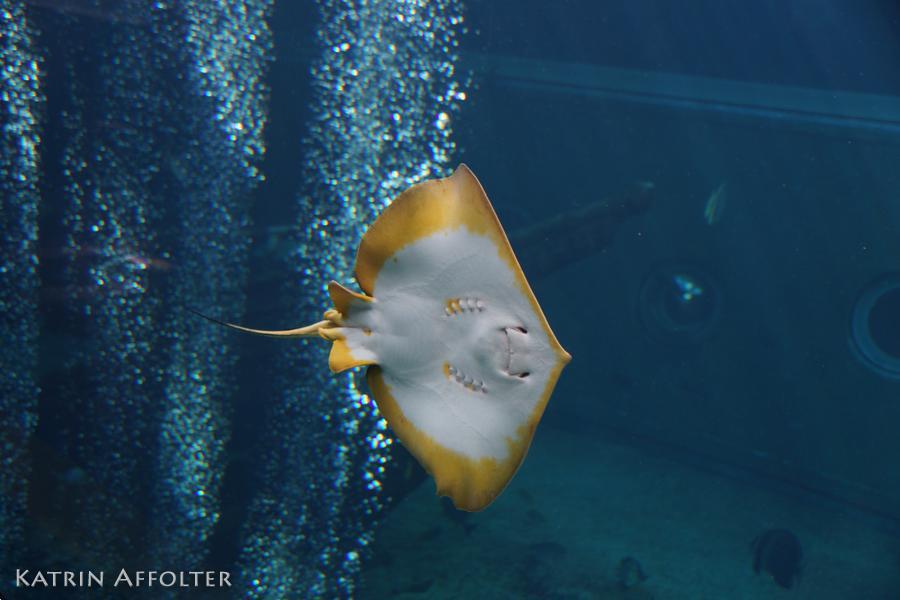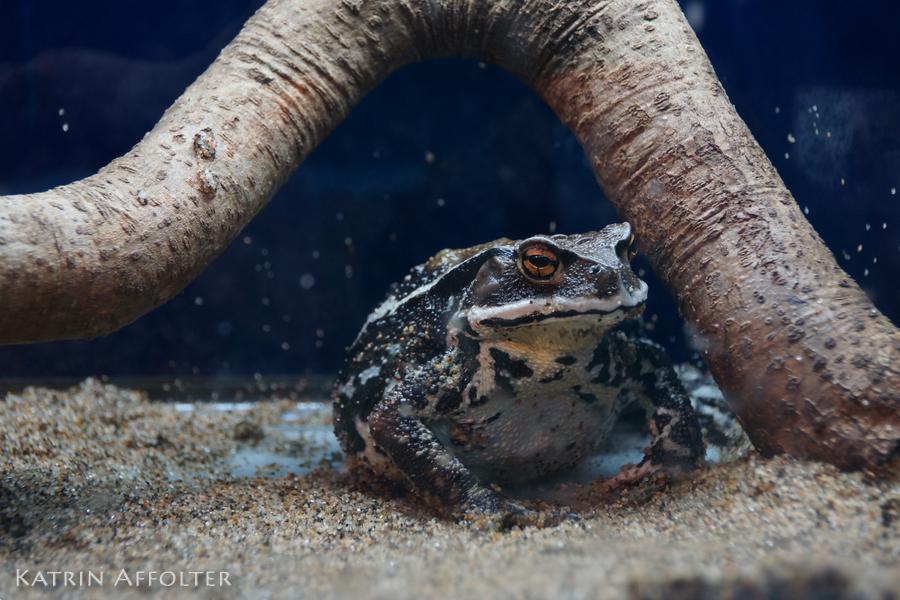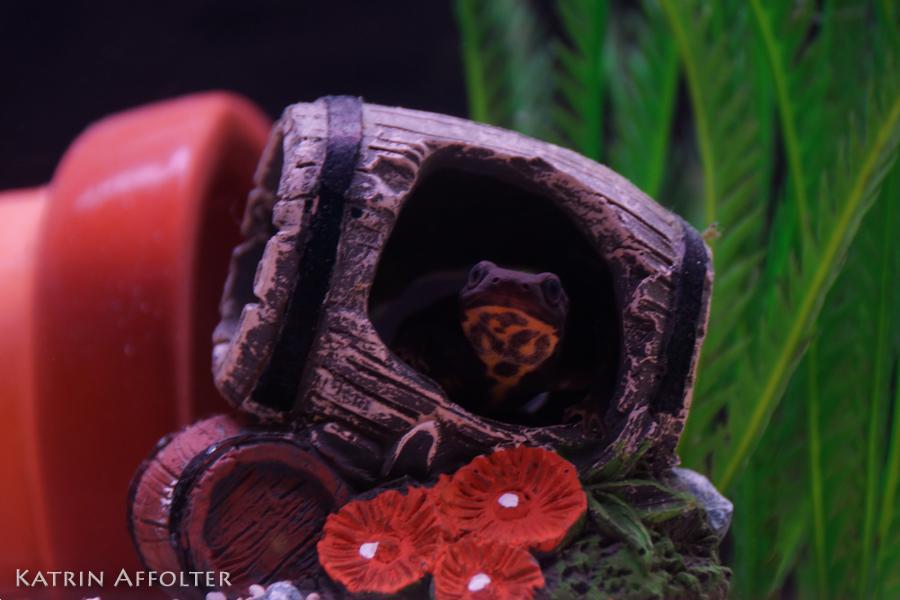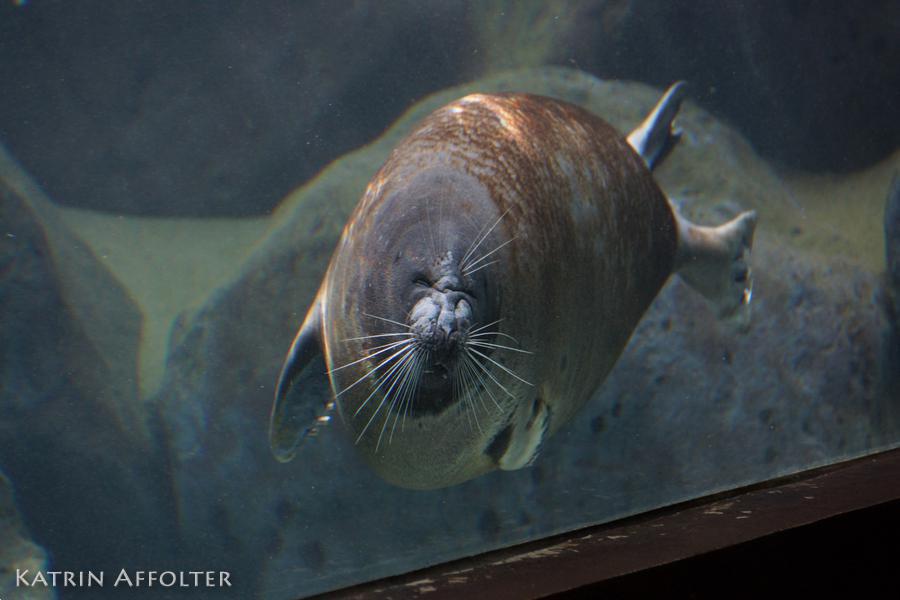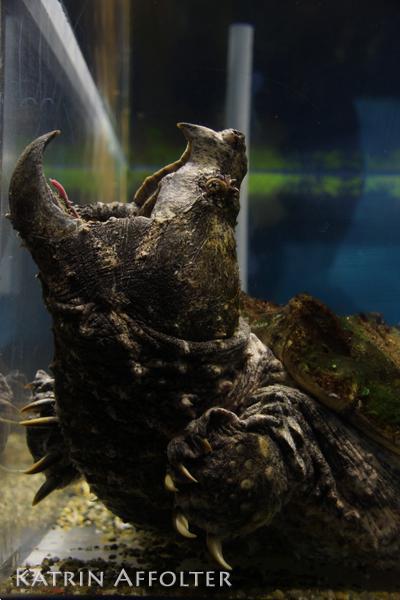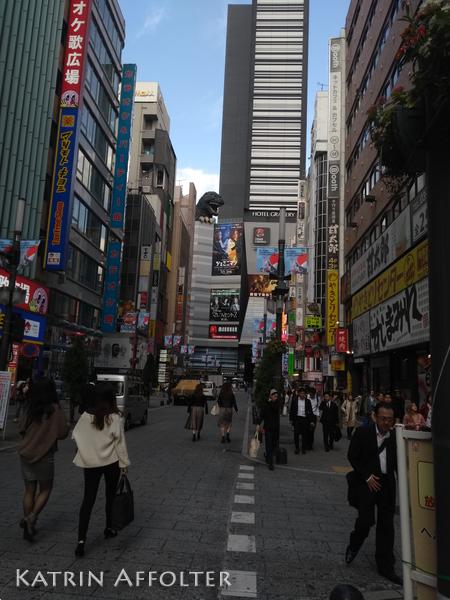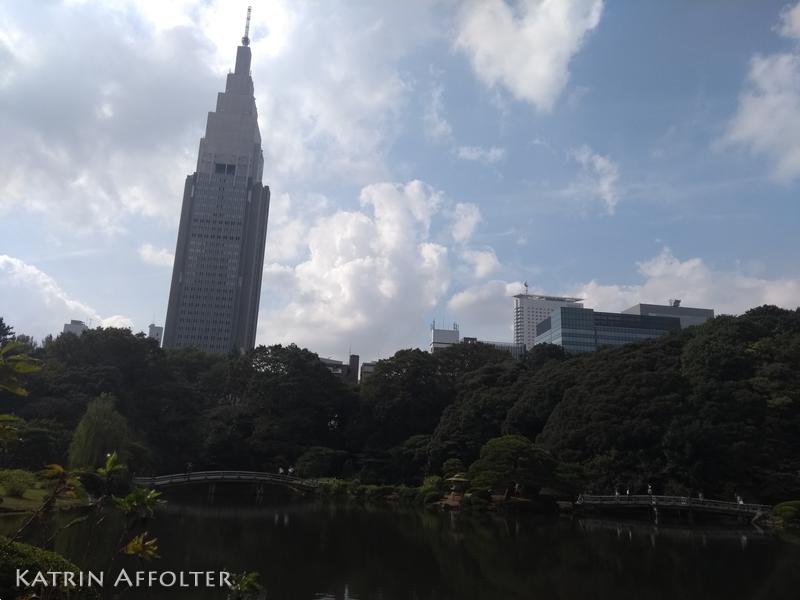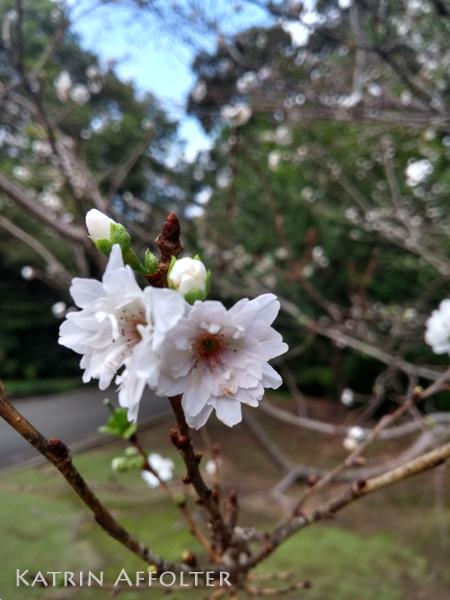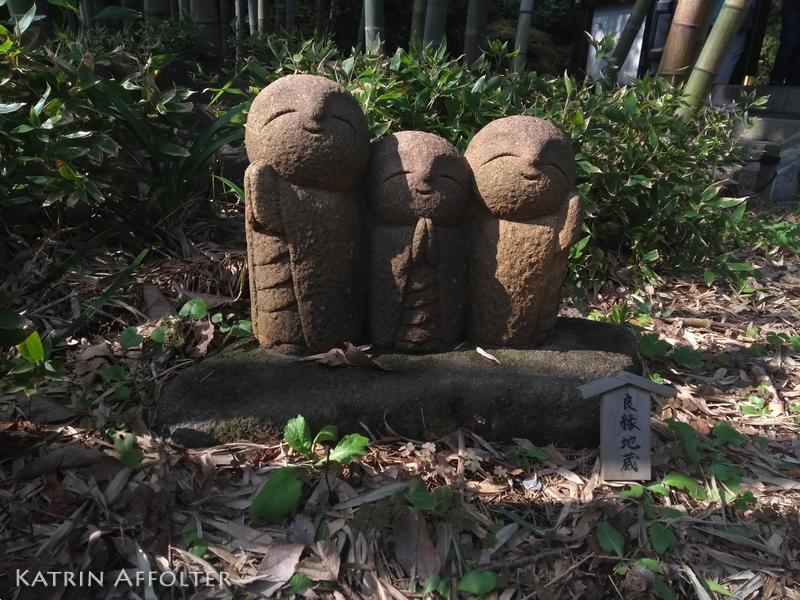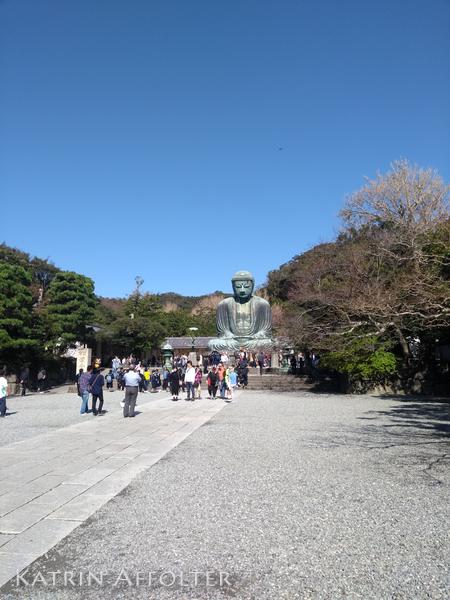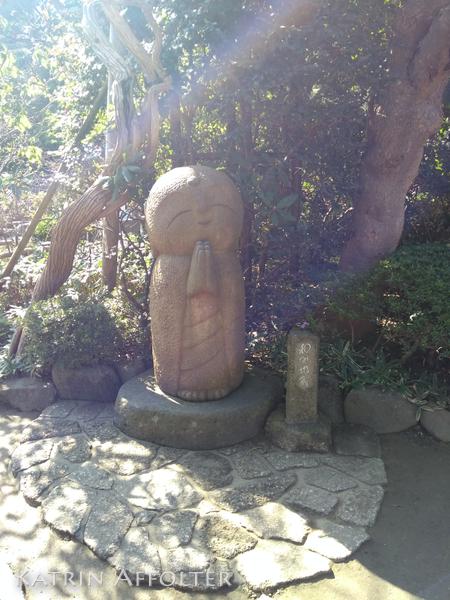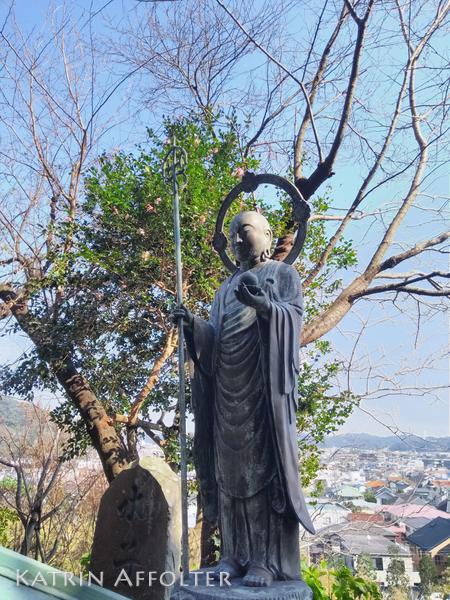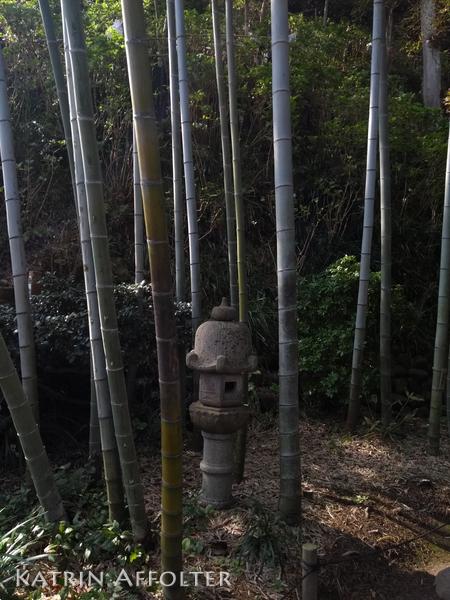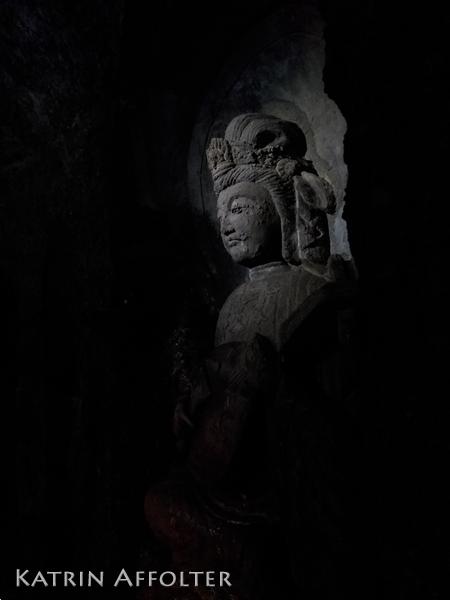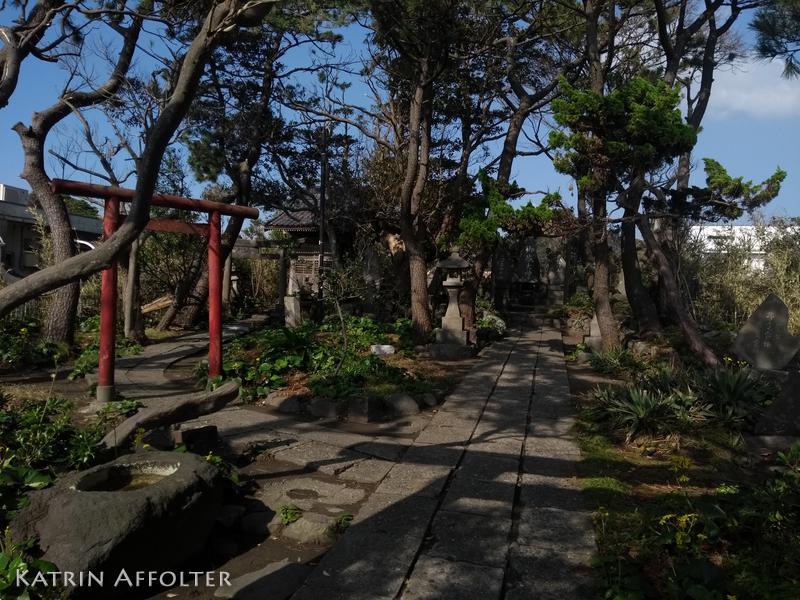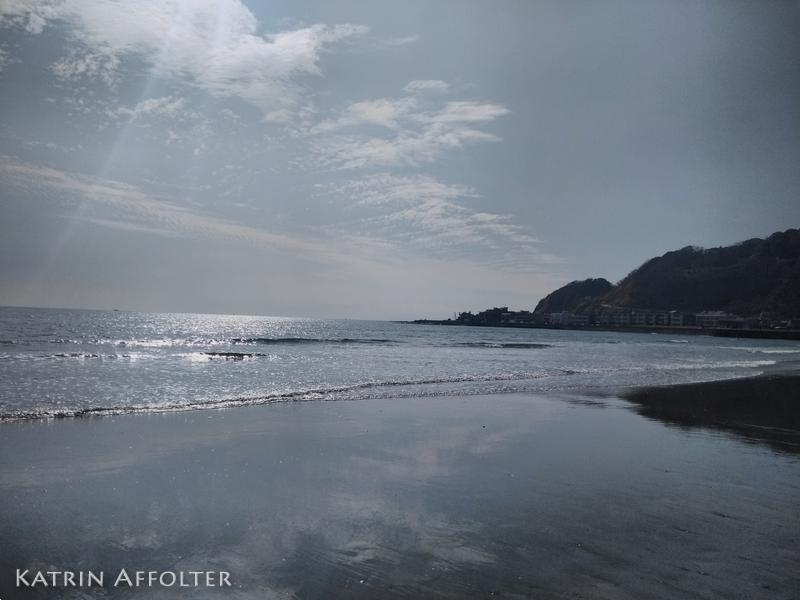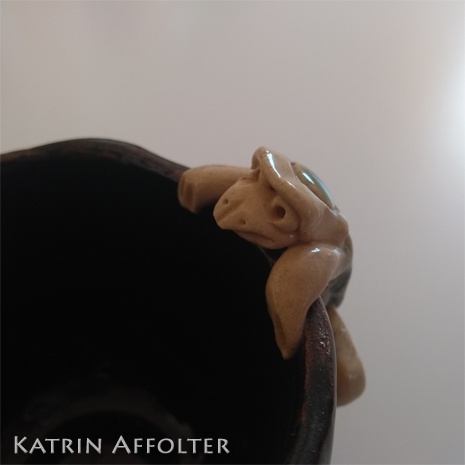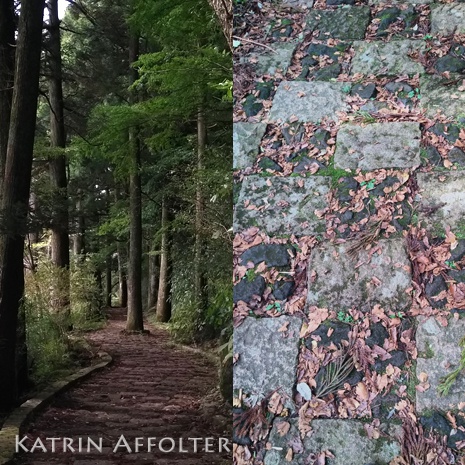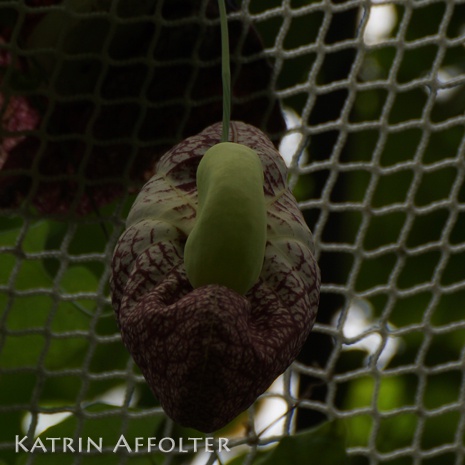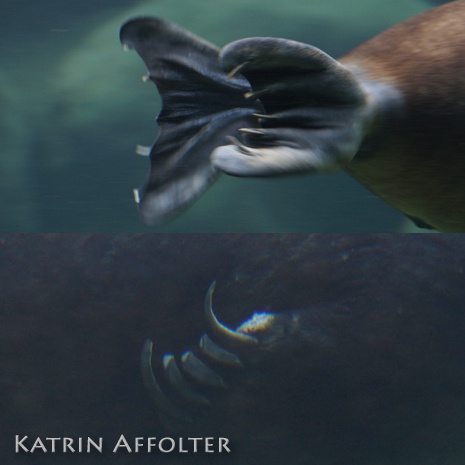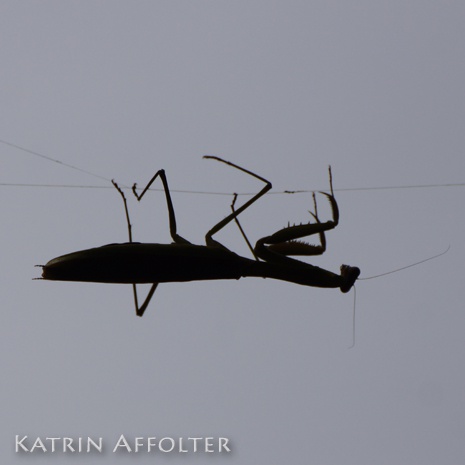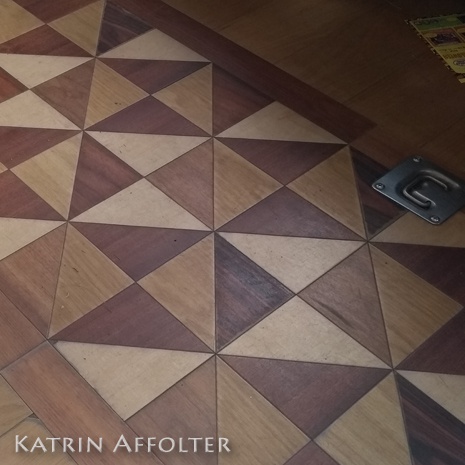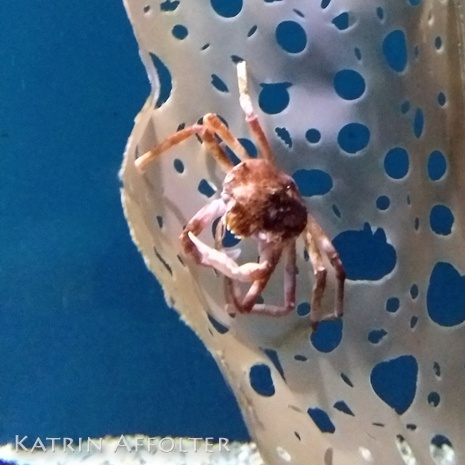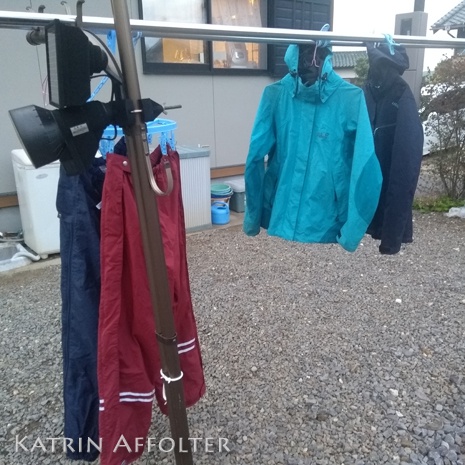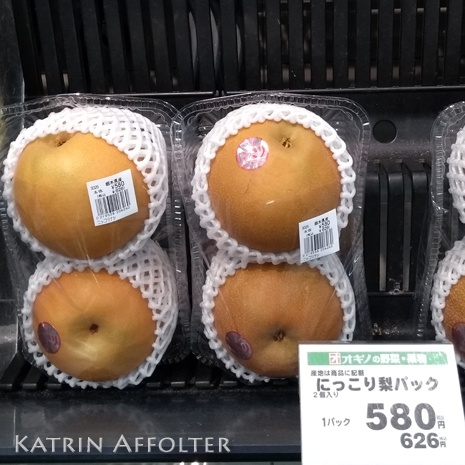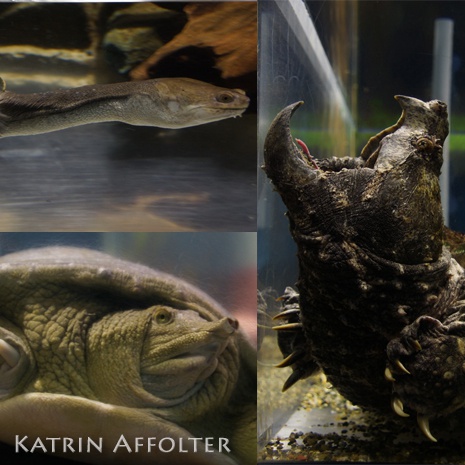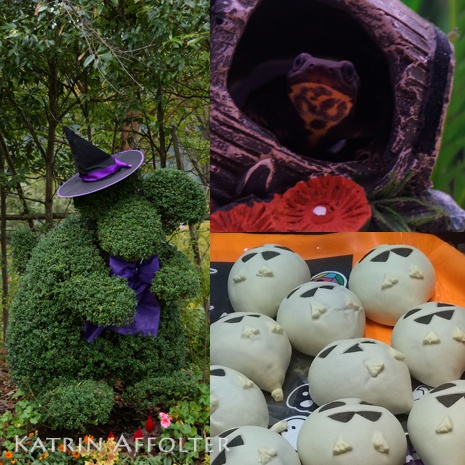On October 12th, typhoon Hagibis (category 5) hit Japan and caused devastating damage. We were fortunate that our vacation could proceed as planned, but it was on the "wet and wild" side with plenty of rain from above and below. We were also a bit early for the autumn season, and any leaves that had already changed colors were knocked down by the typhoon.
Osaka
October 15h to 18th
Fortunately, the transportation from Tokyo to Osaka was open and operating again by the time we landed. The announcements of cancellations and detours due to flooding showed us how lucky we were.
Our stay in Osaka was overshadowed by rain clouds, and the only sunny day we had was spent at Kōya-san. Despite the bad weather, we didn't postpone our visit to the castle, and we took the required photo at the same spot as previous visits. What started as a coincidence has now become a tradition.
Kōya-san (Osaka)
October 16th
Informally, a group of mountains south of Osaka is referred to as Kōya-san. Originally, the name was the nickname of a local Buddhist Kongōbu temple, which encompasses the entire plateau with numerous sub-temples.
Either way, I fell in love with this place on my first visit to Japan - luckily, we had a day of sunshine that we took advantage of to walk through the ancient graves and get our shoes really dirty.
Kaiyūkan (Osaka)
October 18th
The aquarium in Osaka is one of the largest in the world. In the center of the building is a huge tank that houses two whale sharks and manta rays, among other things. Additional tanks and exhibits are arranged around it: seals, penguins, giant crabs, an exhibition on the Arctic, and much more.
Trip to Hakuba
October 18th to 21st
As with every trip to Japan, visiting the host parents was also on the agenda this time. We arrived late on Friday, were packed into the car early Saturday morning, transported to Hakuba (with many stops along the way), well-fed, and then repeated the same game on Sunday backwards. On Monday morning, we were then put on the bus to Kawaguchiko at a slightly less early time.
Kawaguchiko
October 21st to 26th
The weather gods were slowly getting merciful, so we at least had one day of pure sunshine in Kawaguchiko. The other days were a mixture of rain, fog, and clouds. The viewpoints seemed to be used to this kind of weather: at one place you could buy a retouched photo of yourself in which Mt. Fuji was copied in, as it was rarely visible behind all these clouds.
We arranged our day program according to the weather: shrine in the rain, park in the sun - and anything near the hotel was visited when it stopped raining.
Kitaguchi-hongu (Kawaguchiko)
October 22nd
As so often, a path lined with old stone lanterns leads to the shrine. This shrine is also surrounded by thousand-year-old cedar trees. It was a proper autumn day, just like we know them in Switzerland. Nevertheless, the high fog together with the rain gave the facility a mystical atmosphere - sometimes this kind of weather can be quite beautiful.
Hakkai Park (Kawaguchiko)
October 23rd
New day, new luck, better weather. The weather forecasters were right, and we had beautiful blue skies. So, it was time to wake up early and hop on the first bus. First stop: Hakkai Park - ironically, we knew nothing about it, but it was right at the station where we wanted to get off.
The park consists of a small water feature with Koi fish and a hut with a waterwheel. In the background, you can see Mount Fuji, mainly its freshly snow-capped white peak. This was the first time this fall/winter that Mount Fuji got a white peak.
Oshino Hakkai (Kawaguchiko)
October 23rd
A small village in picturesque surroundings with eight ponds and a view of Mount Fuji. It is located between the lakes of Kawaguchiko and Yamanakako. The eight ponds have inflows from Mount Fuji, which filter the water so that the ponds have very clear water.
From Hakkai Park, it was less than a ten-minute walk to this spot. However, unlike the park where we were alone, there was a lot of hustle and bustle with many tourists here.
Yamanakako Hananomiyako (Kawaguchiko)
October 23rd
A flower garden that is famous for photographs featuring a sea of flowers in the foreground and Mt. Fuji in the background. The park is planted with flowers that bloom from spring to autumn, ensuring that the necessary plants for the famous photos are always available.
During our visit to the park, we could watch as clouds from the sea slowly moved closer to Mt. Fuji and gradually surrounded it.
Iyashinosato (Kawaguchiko)
October 23rd
The village was destroyed by a landslide in 1966. 40 years later, it was reconstructed, including the traditional thatched roofs, and is now a museum village. Visitors can not only learn about traditional Japanese crafts but also buy related products on-site.
We were lucky with our visit, as it only drizzled on and off, but didn't rain heavily. One of the present artisans made small figures that could be found all over the village. At his shop, he handed us seeds with which we could feed the curious sparrows from our hands (and we bought a kappa cup).
Hakone
October 26th to 28th
Our journey to Hakone was a bit more adventurous than planned: the typhoon had brought a lot of water to this area, which had caused some washouts and landslides. However, we were extremely lucky not to have traveled from Tokyo. So we had the bus to ourselves along with another couple - but on the way back to Tokyo, we were packed in like sardines.
The weather was doing its best, and our hotel was fantastic with our own onsen attached to our room and excellent traditional dinner.
PS: The pirate ships had Roman figureheads at the bow, and on the deck, you could take photos with Napoleon or pirates.
Hakone Gora Park (Hakone)
October 26th
After our unusual journey and checking into our hotel, we decided to visit the Hakone Botanical Garden. The garden was opened in 1914 and is the first garden in French style in Japan. Apart from that, the garden offers many different facilities such as the tea garden and several tropical greenhouses.
The special thing about this garden, especially in the greenhouses, is the way various decorations have been incorporated. For example, one greenhouse had many beetle statues integrated into it, and in another, the plants were planted in artistic pots.
Hakone-en Aquarium (Hakone)
October 27th
The special thing about this aquarium - besides the fact that we stumbled upon it and it wasn't planned - is the water tank in the center of the main building (similar to the one in Osaka, but much smaller) where a diver feeds the animals, including a ray. We definitely didn't know about the little teeth that rays have or what their mouths look like - now we do! But there were also other exhibits, such as those of turtles and amphibians. A small aquarium, and expensive compared to Japanese standards, but it was definitely worth it!
Tōkyō
October 28th to November 1st
The journey from Hakone to Tōkyō was cumbersome, but great effort was made to make it as comfortable as possible. We were certainly glad to see the traffic jam on the other side of the road and not be stuck in it.
Our last days of our vacation in Tōkyō were rather relaxed. I was slowly but surely getting tired of returning to the hotel soaking wet. If the weather cooperated, we still went outside for fresh air. So, we took a day trip to Kamakura in good weather this time.
Kamakura (Tōkyō)
Oktober 30th
One fine day, we made our way to Kamakura. Part of the day's goal was to see what had changed in the last 7 years.
The first thing that stood out was that there were many more tourists! This was something that had been following us throughout the vacation. A large part of the tourists must have been rugby fans. This put a bit of a damper on us, and we tried to avoid the main attractions. This led us to go on a discovery tour instead of replicating our previous visit.
Lastly, something humorous: I checked in daily at home to say "yes, we're still alive, no, we haven't drowned (yet)." But since this quickly became boring, my signs of life were packaged in funny "fun facts" that we came across during the day - it started as a joke, ended up as a collection of funny texts. They were edited at home and are now included in my photo album or here:
